Last updated on April 1, 2024
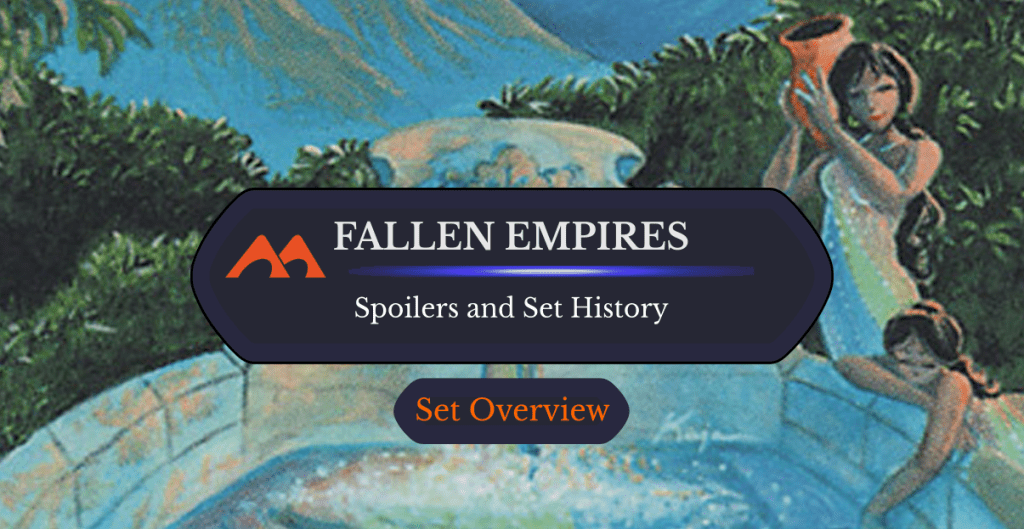
Rainbow Vale | Illustration by Kaja Foglio
The tragedy of Fallen Empires is the short sad story of an underwhelming early Magic expansion that’s notoriously low-powered. Over time its confusing cards have been mostly forgotten or ignored.
Plagued by a low desirability and over-production, Fallen Empires could be considered a failure of a set. But it introduced some staple mechanics and concepts to Magic players, setting the scene for design space still to come.
Why did those empires fall? What made them so forgettable? Let’s dive deep into the annals of history and take a closer look at one of Magic’s earliest expansions!
Fallen Empires Basic Information
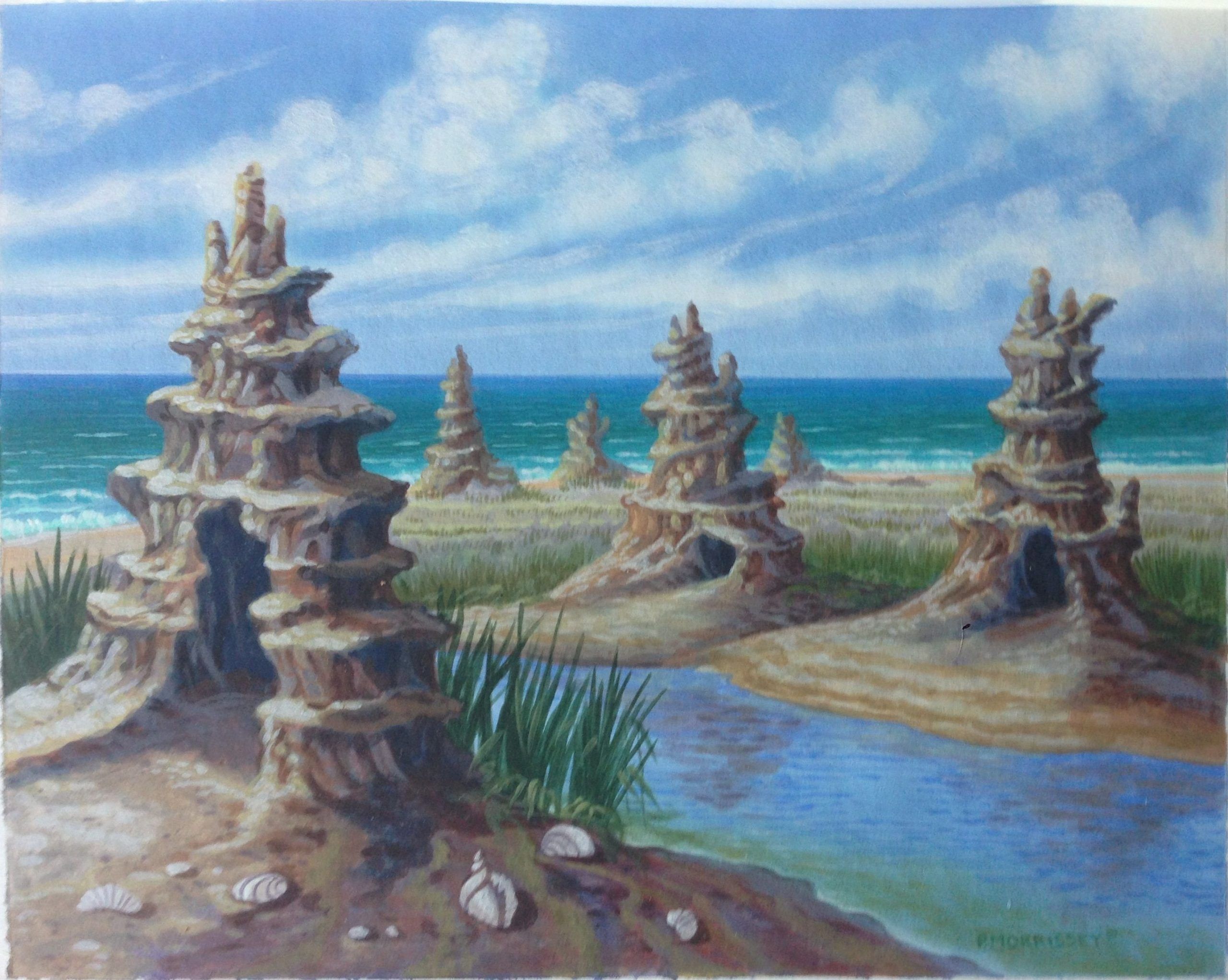
Sand Silos | Illustration by Par Morrissey
Set Details
| Set Symbol |  |
| Set Code | FEM |
| Number of Cards | 102 |
| Rarities | 35 commons, 31 uncommons, 36 rares |
| Mechanics | Counters, Creature Types, Tokens |
Important Dates
| Event | Date |
|---|---|
| Release Date | November 15, 1994 |
About the Set: The Story
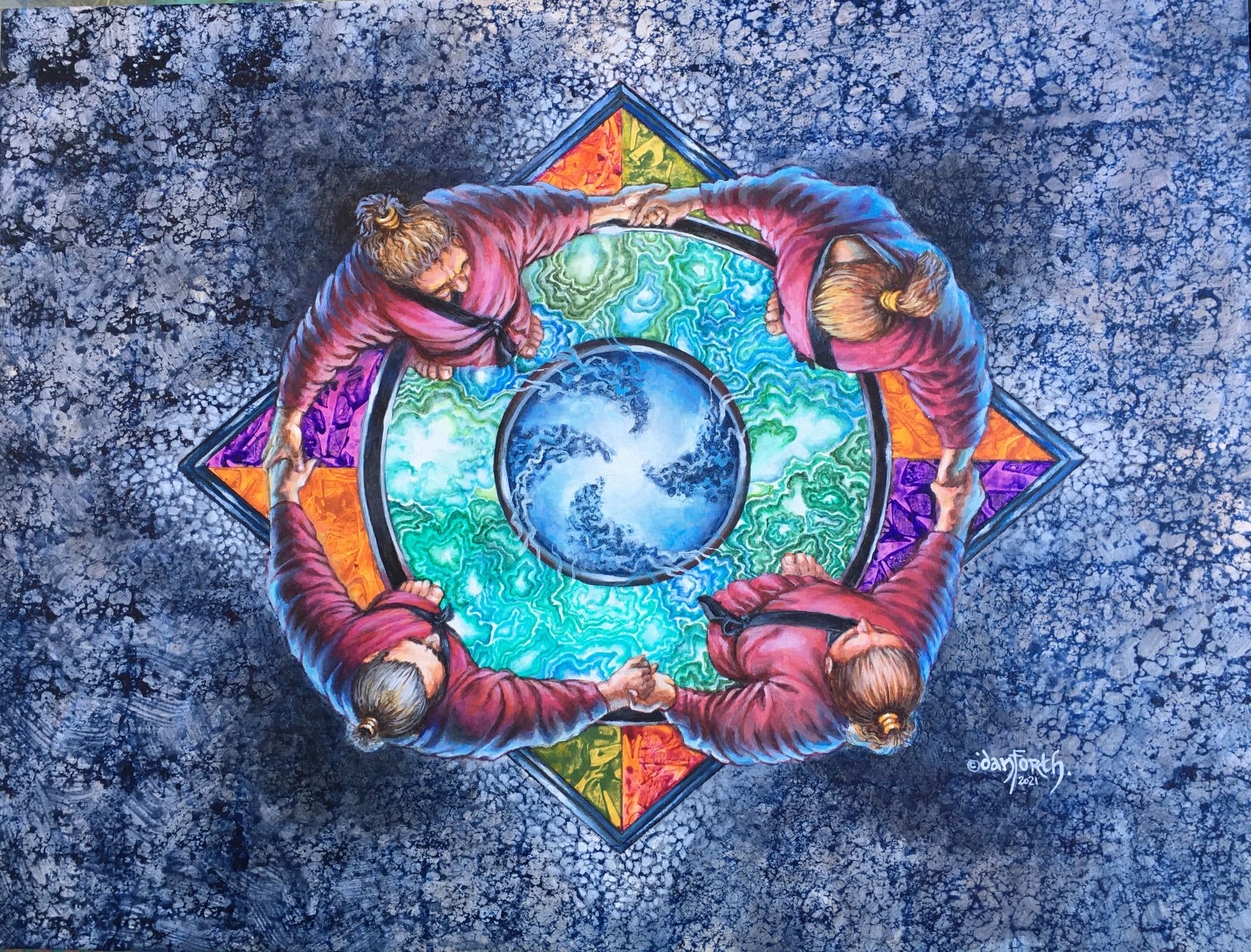
Hymn to Tourach | Illustration by Liz Danforth
Fallen Empires’ in-set narrative is a tale of nations destroyed by their own hubris, and oppressed creatures rising against their masters.
The set follows five warring nations on the continent of Sarpadia in the southern hemisphere of Dominaria. The recently concluded Brothers’ War and approaching Ice Age lead to a resource scarcity that sent these five cultures into conflict with one another. The humans of Icatia represent white mana, while the Order of the Ebon Hand represent black mana. The Crimson Peak dwarves and Havenwood elves represent red and green, respectively, while the Vodalian merfolk who make their homes in the sea surrounding Sarpadia represent blue mana.
The story tells of how the dwarves were defeated in their mountain home by a marauding band of orcs and goblins, and how the Order of the Ebon Hand and Havenwood elves were each overthrown by their own creations. The Order’s Thrulls, used for ritual sacrifice and combatant slaves, eventually gained enough confidence to overthrow their masters and began a dark crusade across Sarpadia.
Meanwhile the cattle-like Thallid gained sentience and revolted against their elven lords. The elves were split on how to handle the revolution, so they were easily defeated by the implacable fungus creatures.
Fallen Empires’s climax came as the Thallids, Thrulls, and orc and goblin armies arrived at Icatia (with the help of old-walker Tevesh Szat) and attacked the nation with all their might. Icatia, assailed by foes both without and within in the form of the Farrelite Cult, was defeated in no time.
The Thrulls eventually dominated Sarpadia, destroying the goblins and forcing the orcs to retreat and hide in caves. Luckily they lacked much imagination and apparently weren't aware that anything existed outside of Sarpadia, so there they remained. Sometime during this overland war the merfolk of Voda were conquered by an attacking Homarid force from the southernmost continent on Dominaria.
Outside the set, Fallen Empires tells a story of too many expansions, too quickly. It was overproduced compared to its projected sales. As the fifth expansion set to hit shelves in 1994, it had to compete for space with the likes of Legends, The Dark, and Antiquities, all powerful sets with much more desirable cards. Because of their generally overcosted or underpowered effects, most Fallen Empires cards aren’t perceived as very valuable.
While production stopped in January of 1995, Fallen Empires packs were still available until well into 1998. Even now sealed packs go for around $15, and you could theoretically buy one of every single in the set for less than $100.
Set Mechanics
Fallen Empires was only the fifth ever expansion for Magic, and it was the fifth set released that year. It introduced some mechanics and concepts that seem integral to the game today, including the use of counters on permanents, the creation of creature tokens, and “creature types matter” effects.
In fact, there were so many tokens and counters printed in the set that a special sheet was printed in Duelist magazine.
Counters
Fallen Empires introduced a staggering 14 different counters:
| Type of Counter | Source |
|---|---|
| Javelin counter | Icatian Javelineers |
| Credit counter | Icatian Moneychanger |
| Tide counter | Homarid, Tidal Influence |
| Net counter | Merseine |
| Time counter | Tourach's Gate |
| Spore counter | Elvish Farmer, Feral Thallid, Fungal Bloom, Spore Flower, Thallid, Thallid Devourer, Thorn Thallid |
| Cube counter | Delif's Cube |
| Storage counter | Icatian Store, Hollow Trees, Sand Silos, Dwarven Hold, Bottomless Vault |
| +0/+1 counter | Dwarven Armorer |
| +1/+0 counter | Dwarven Armorer, Ebon Praetor |
| -2/-2 counter | Ebon Praetor |
| +2/+2 counter | Soul Exchange |
| +1/+2 counter | Armor Thrull |
| -1/-1 counter | Tourach's Chant, Thelon's Chant |
This huge variety of stat-modifying and mechanic-tracking counters made Fallen Empires a confusing set. Correctly identifying what each die on an opponent’s creatures represented made this a resoundingly unfun experience, and Wizards has focused on only using +1/+1 or -1/-1 counters at any given time since then.
Until Ikoria, of course, when they determined that we simple Magic players were mature enough to handle multiple types of counters at once.
Creature Types
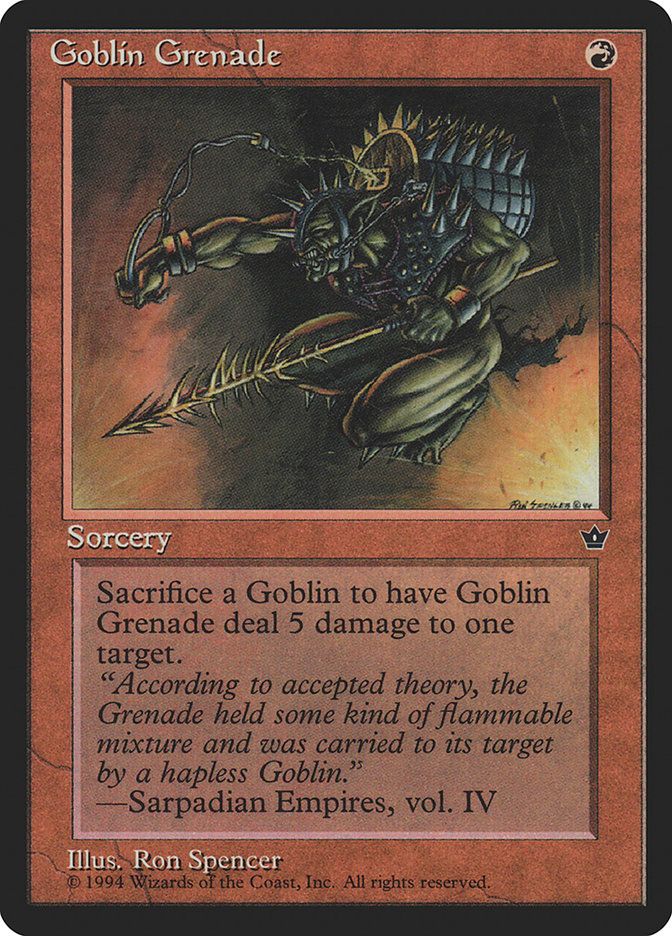

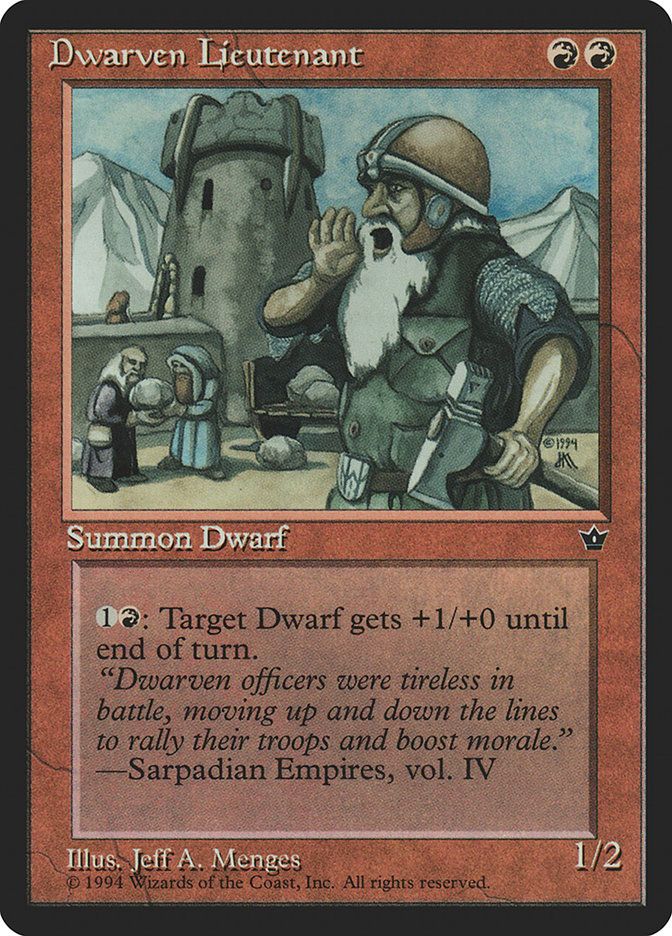
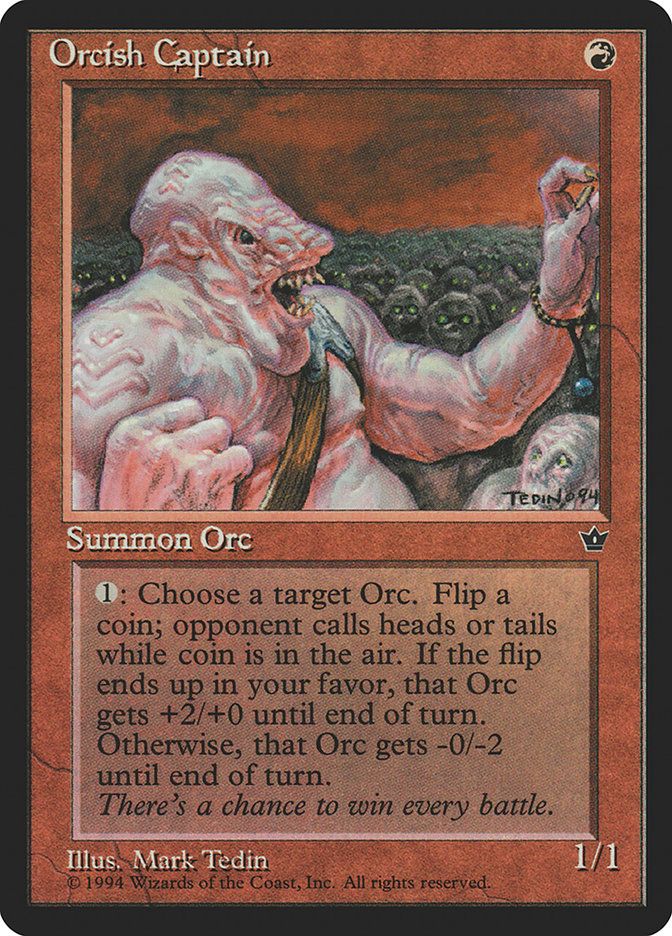
Fallen Empires was the first set to make use of a consolidated list of creature types. The designers wanted to tie the creatures together thematically, so they gave similar abilities to all the townsfolk (later changed to humans), Thrulls, Thallids, dwarves and merfolk.
A total of 14 creature types appear in FEM, a considerably smaller number than any of the previous sets. A handful of cards reference specific creature types: Goblin Grenade and Raiding Party both call for a specific type of sacrifice, and Dwarven Lieutenant and Orcish Captain both act as pseudo-lords with activated abilities.
Tokens

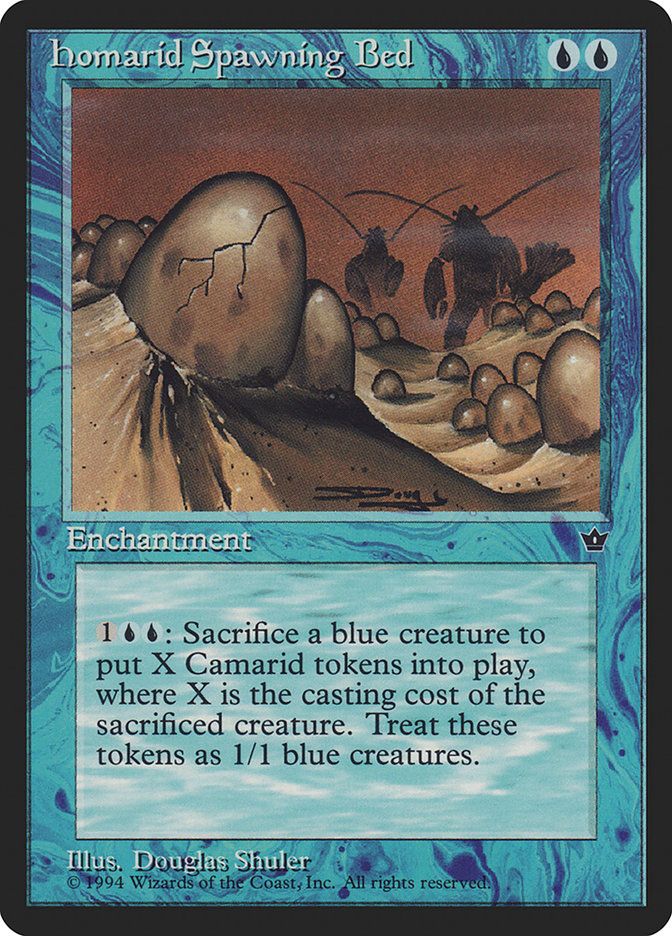
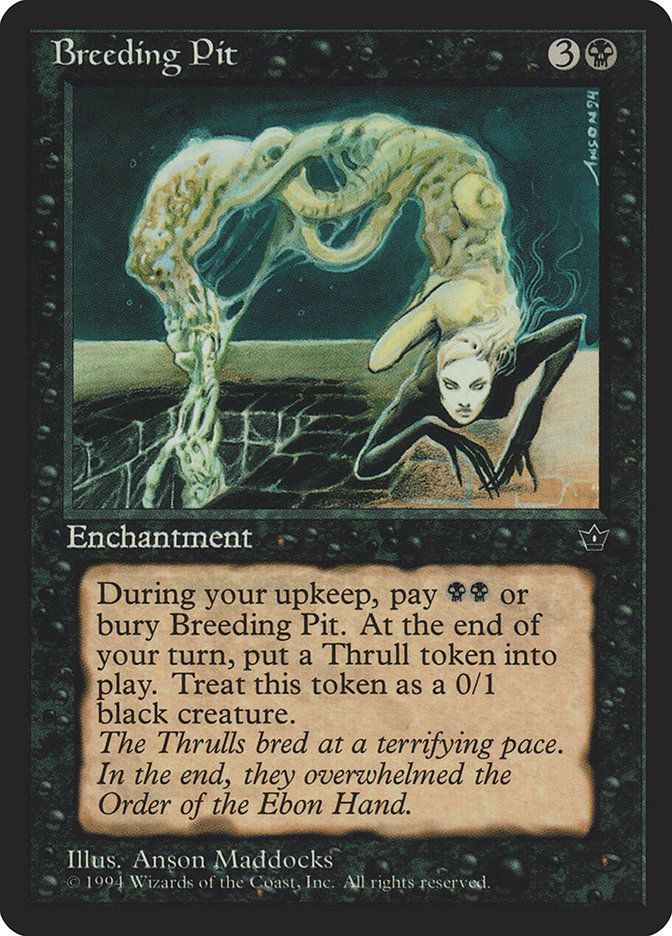
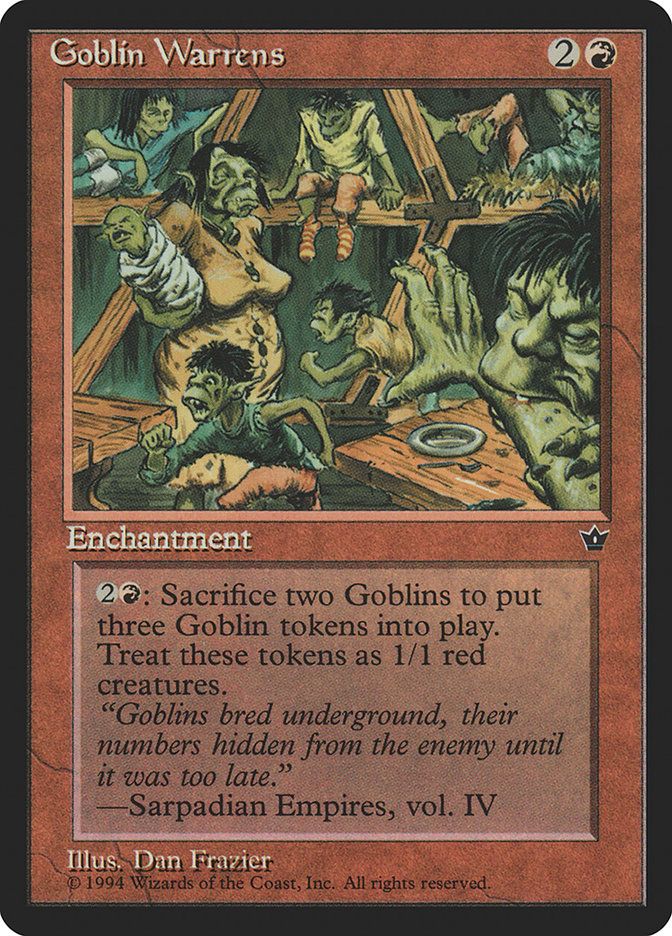
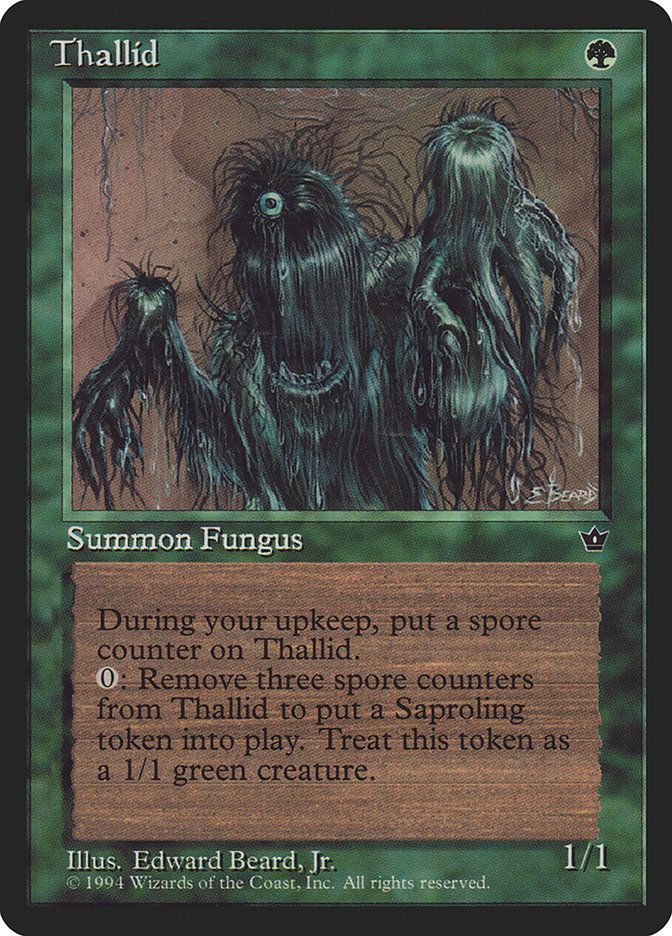
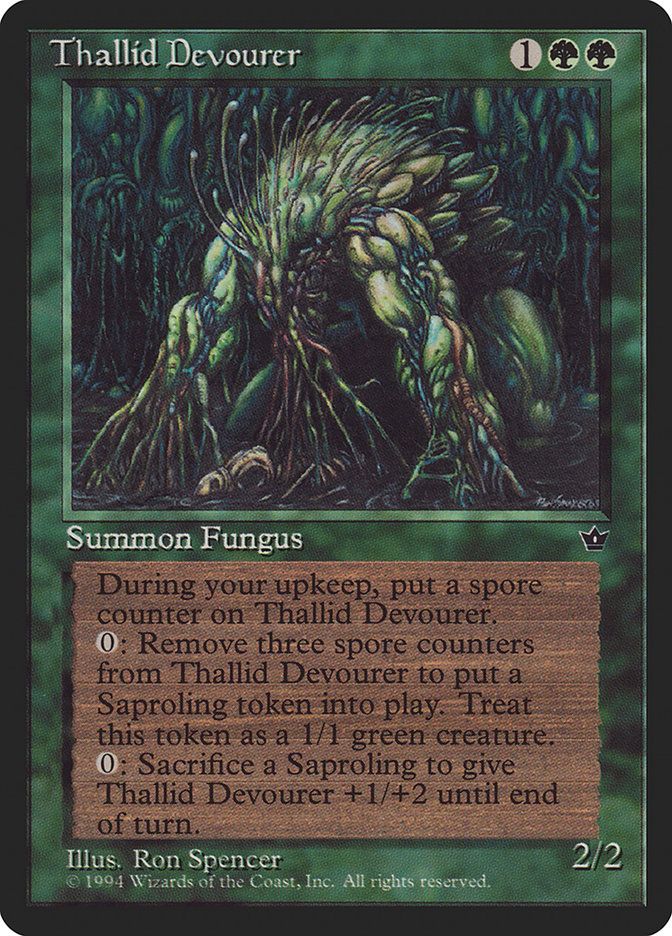

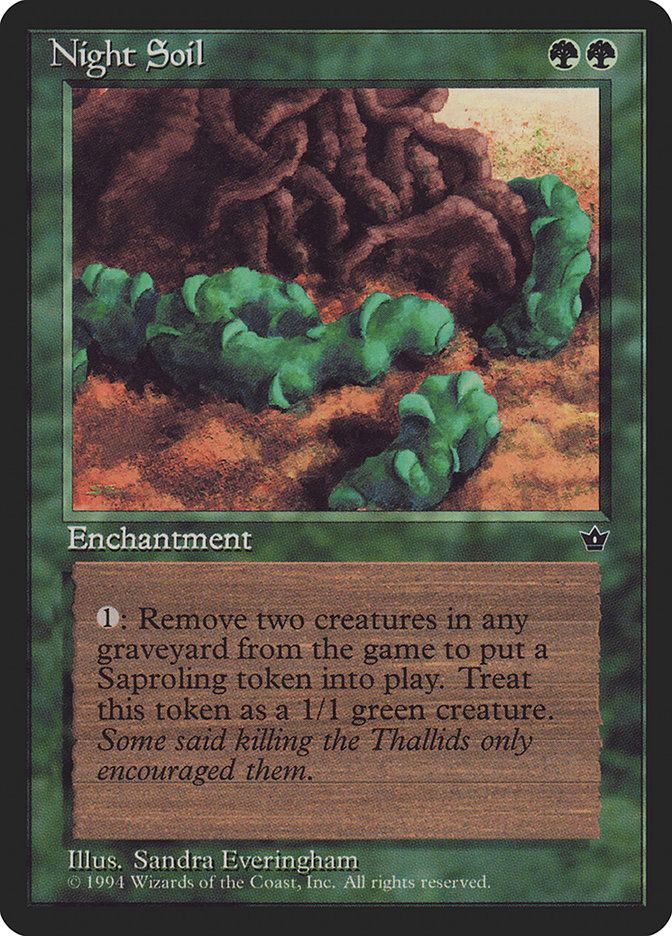
Fallen Empires introduced creature tokens for the first time. Eight cards produce creature tokens in the set: Icatian Town creates 1/1 Citizens, Homarid Spawning Bed makes 1/1 Homarids, Breeding Pit makes 0/2 Thrull tokens, and Goblin Warrens makes 1/1 Goblins.
Green gets the most access to token generation in the set, with Thallid, Thallid Devourer, and Elvish Farmer each using spore counters to create 1/1 Saproling tokens. Night Soil still sees some play in EDH as efficiently costed graveyard removal.
Fallen Empires Full Card List
White

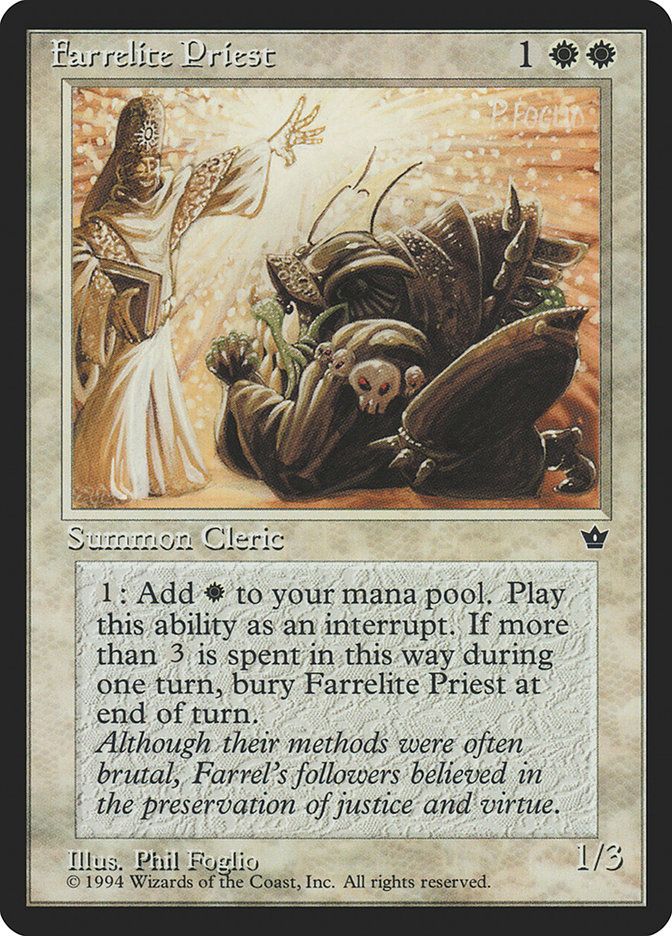
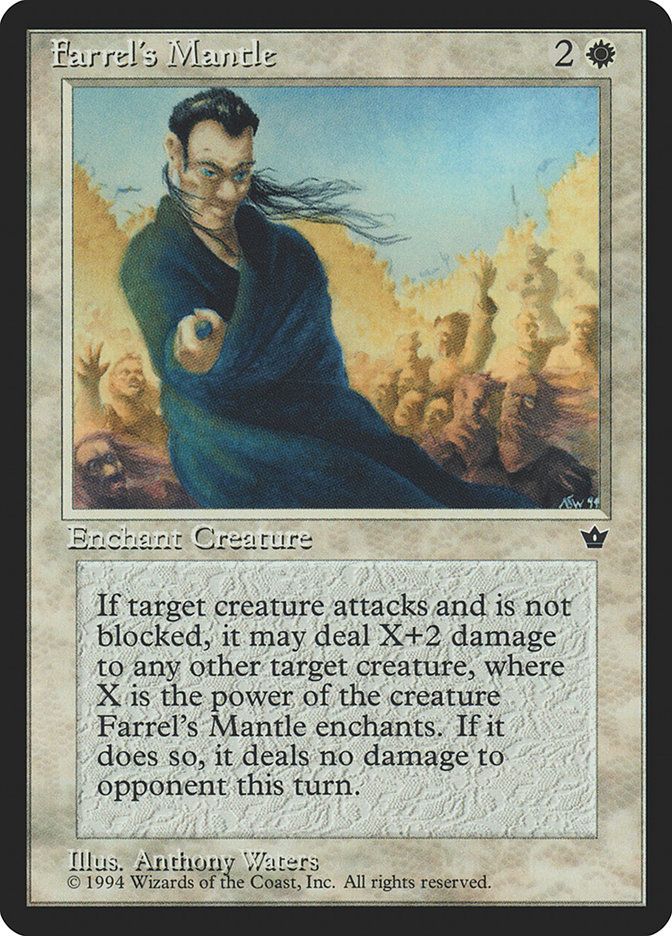
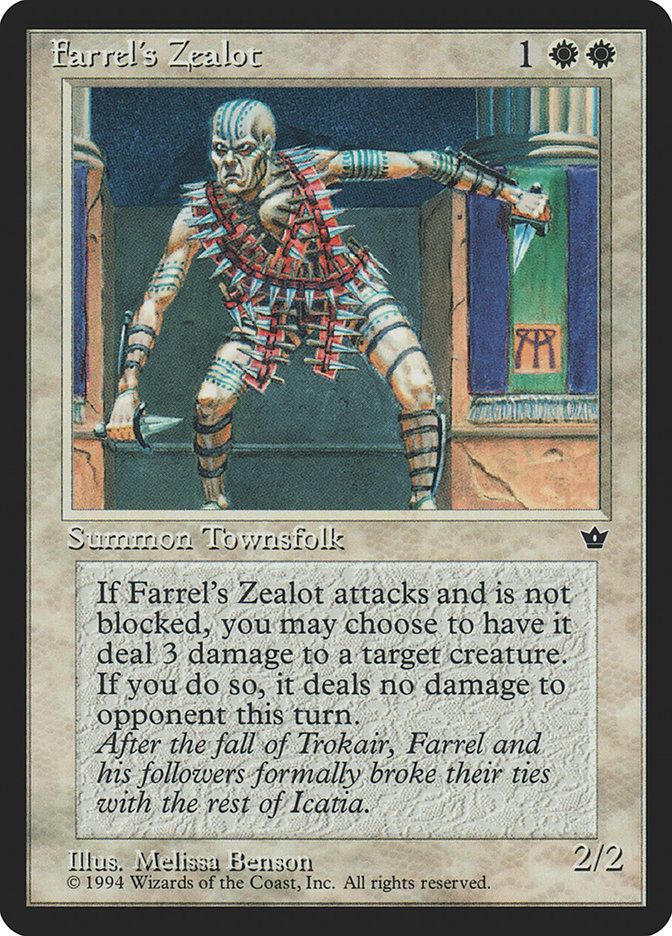
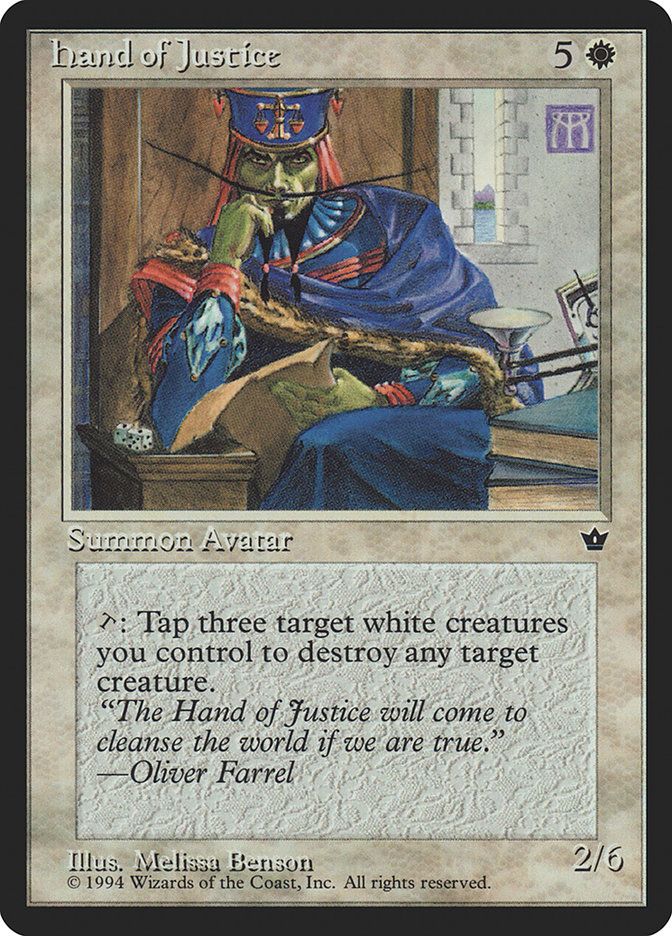
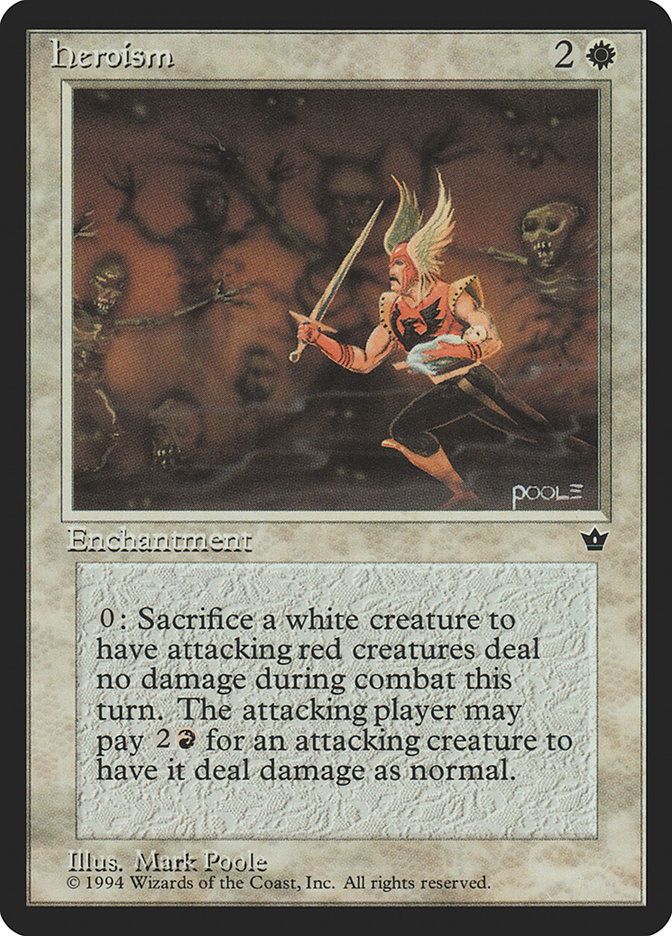
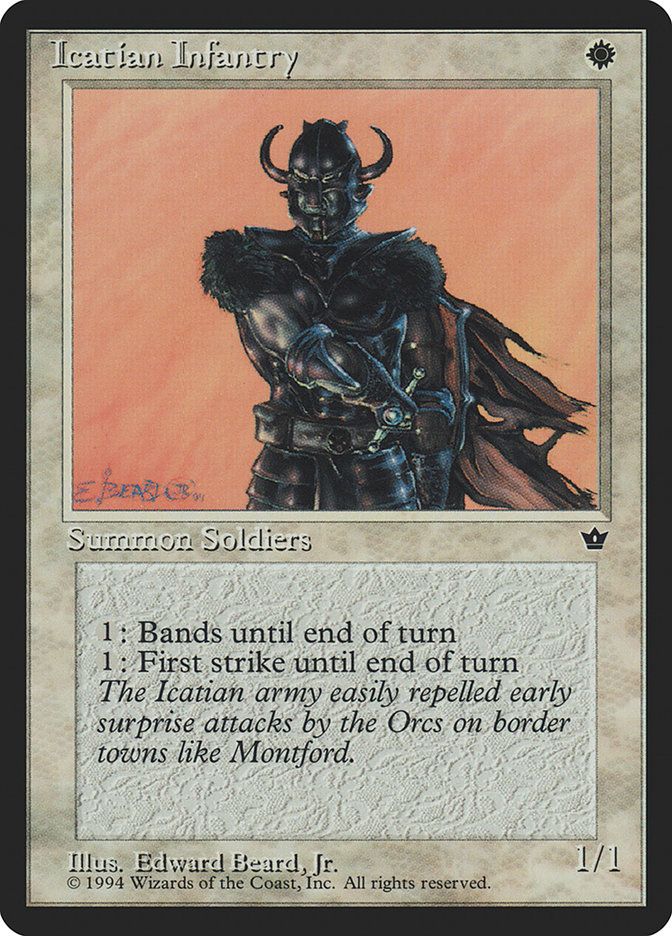

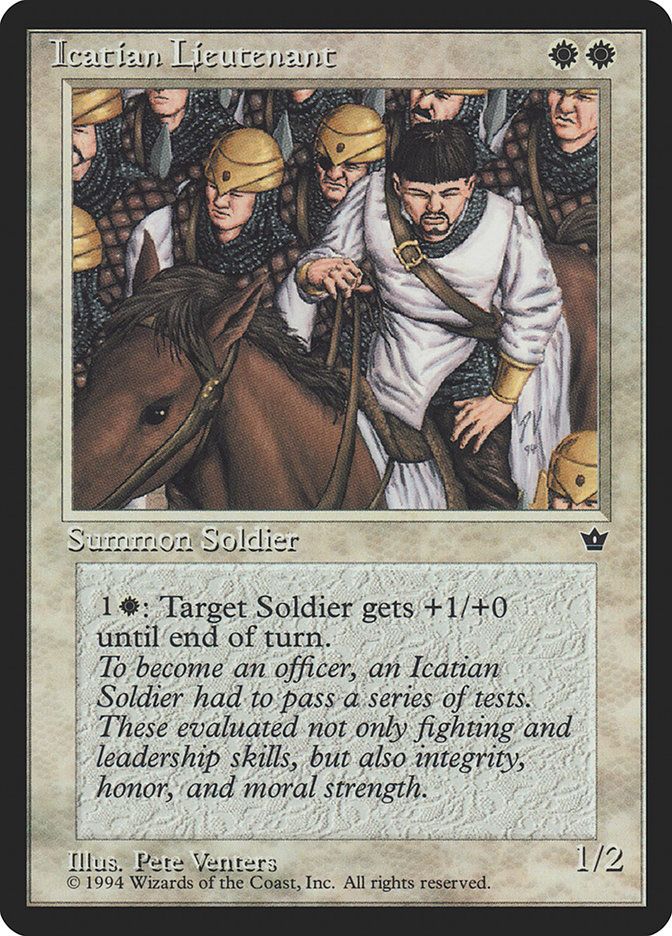
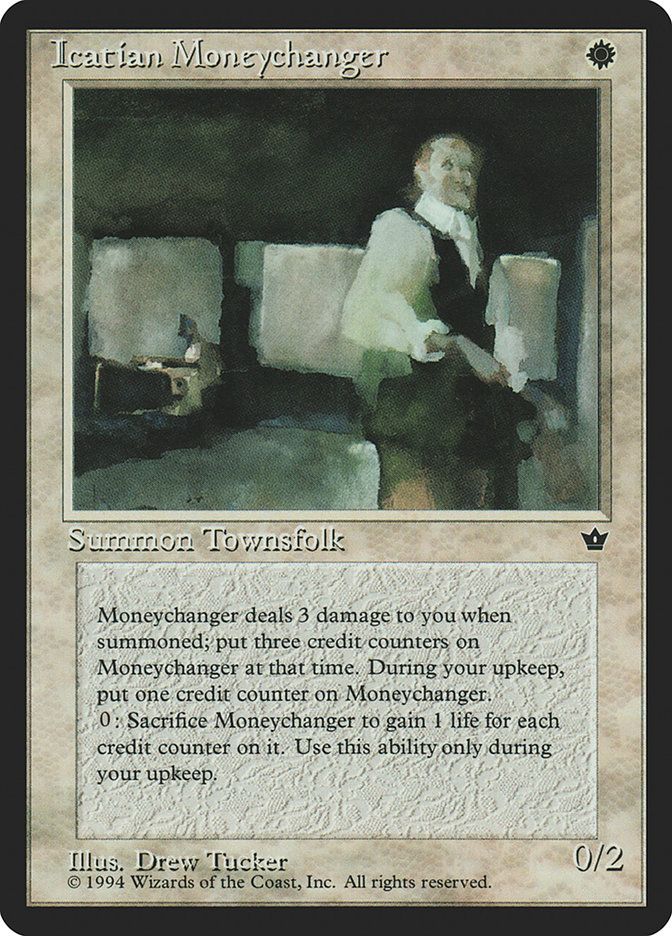

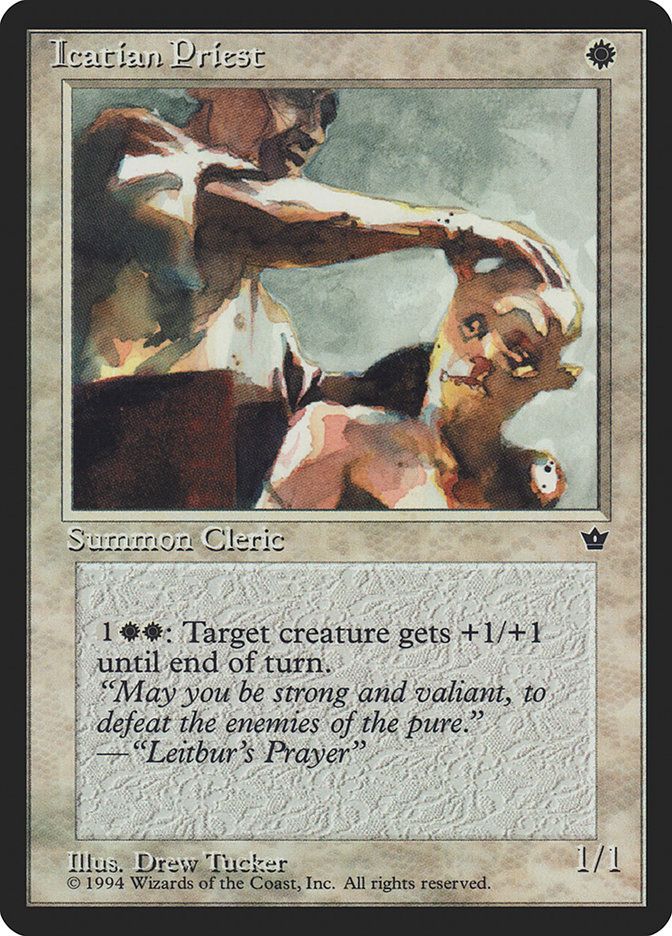
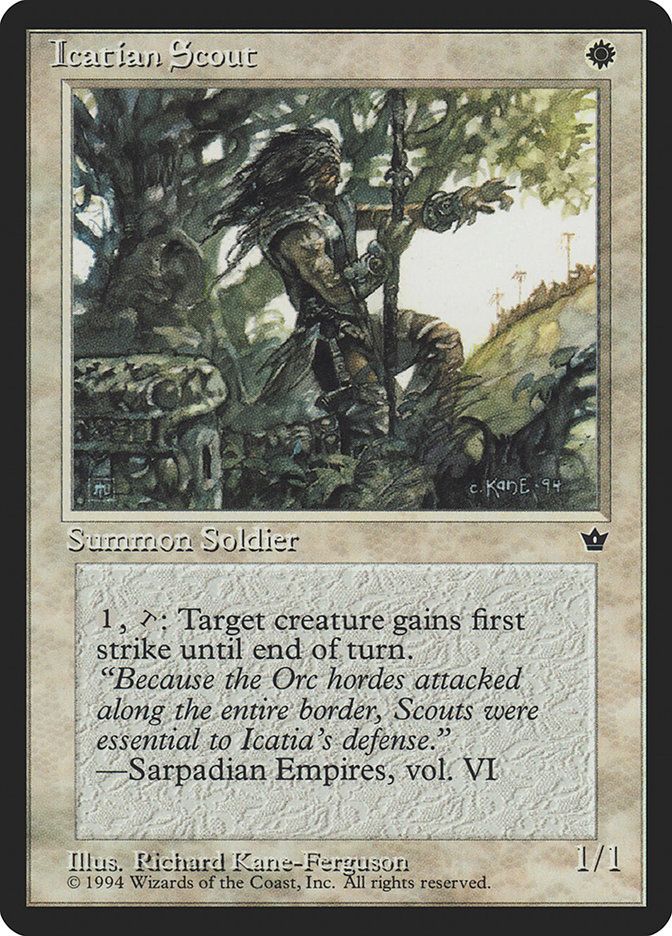



Blue
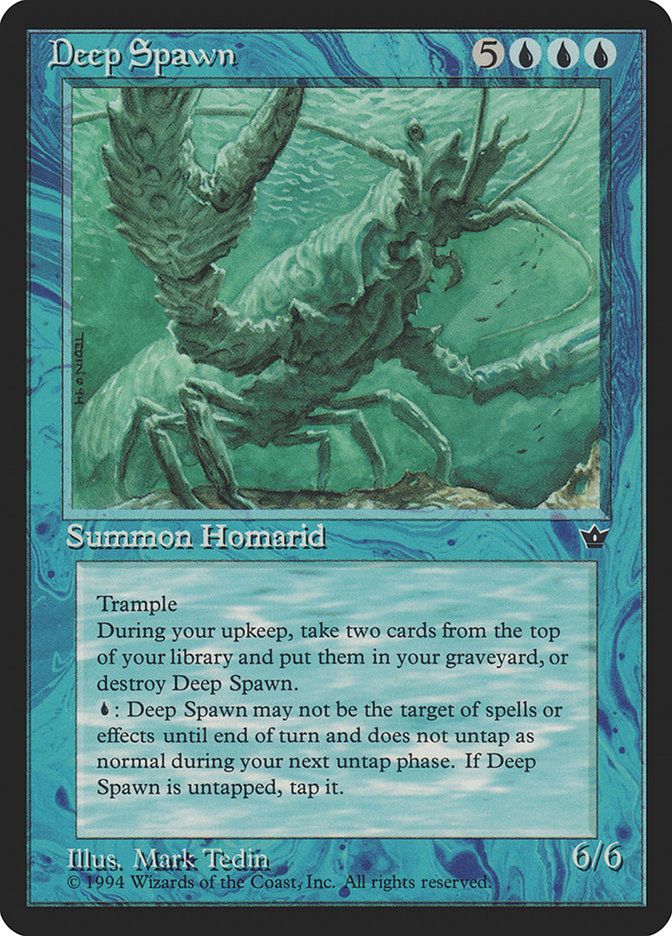
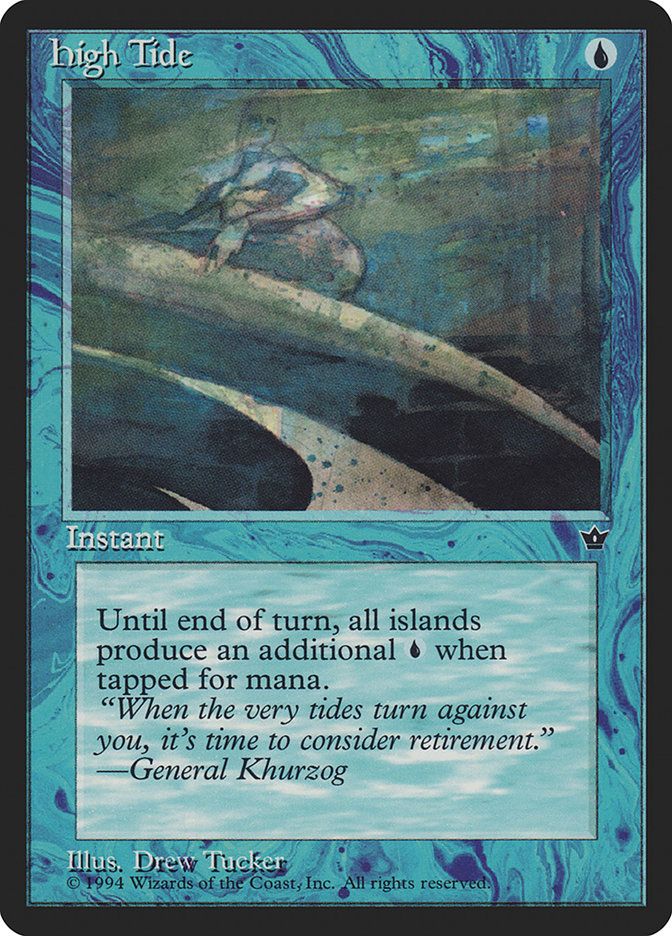
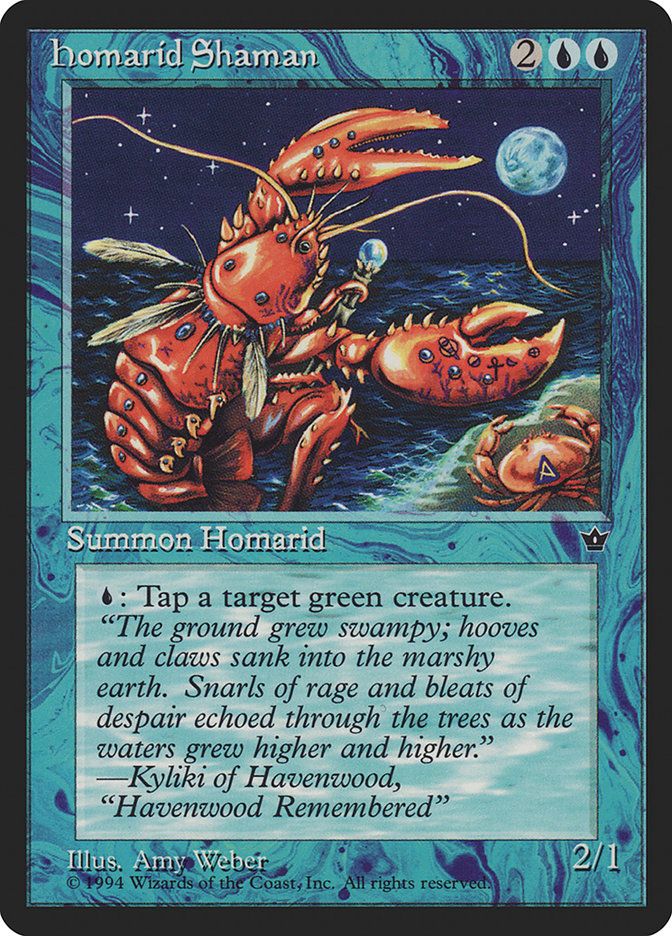


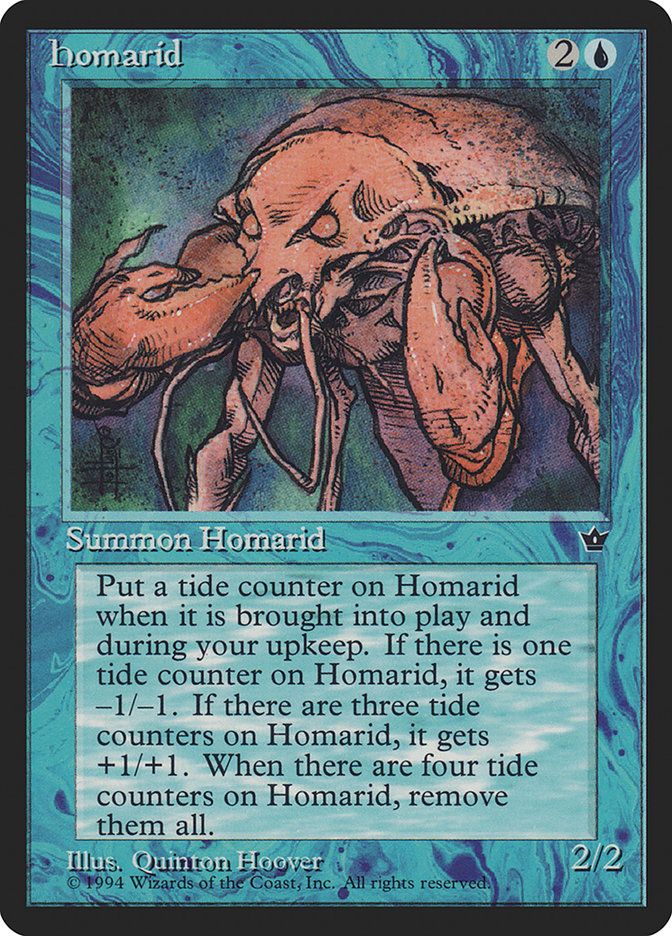
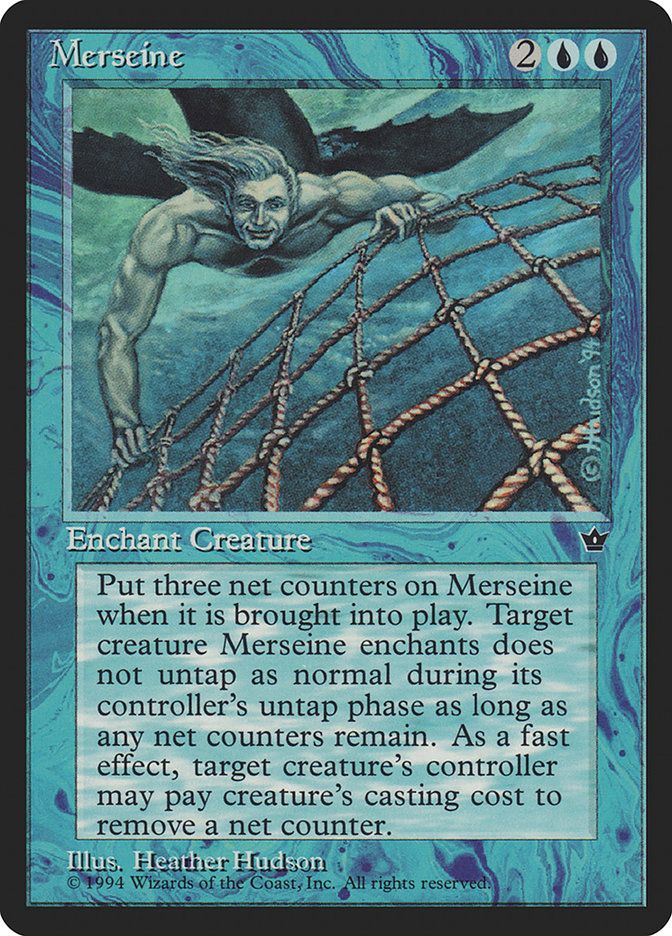
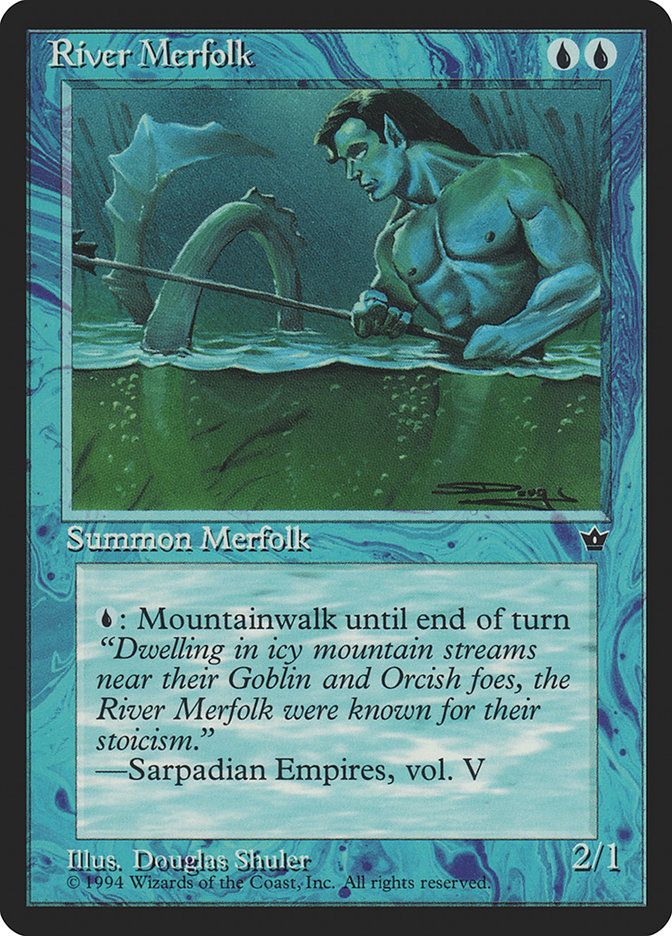
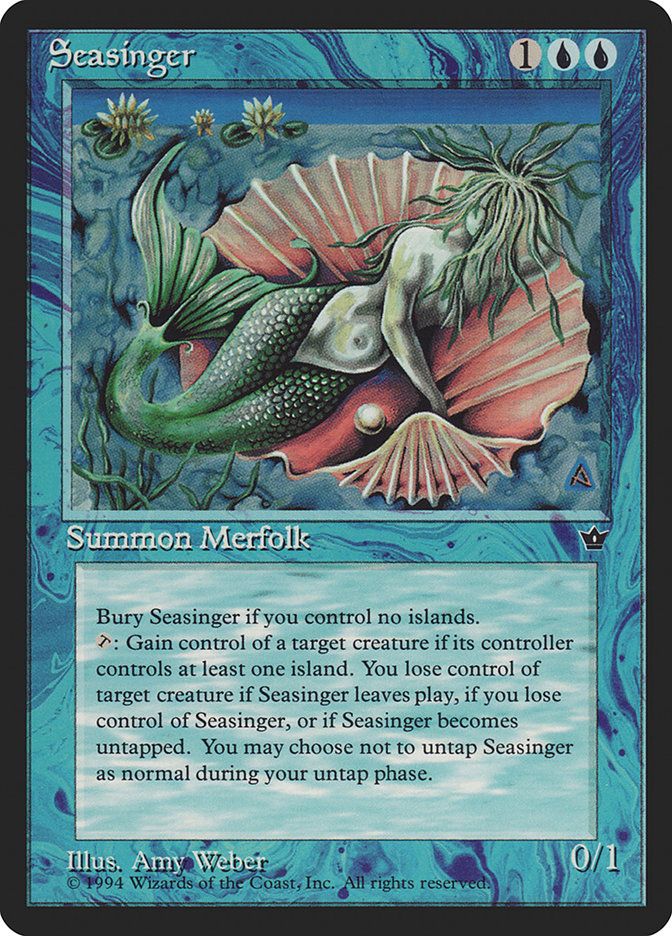
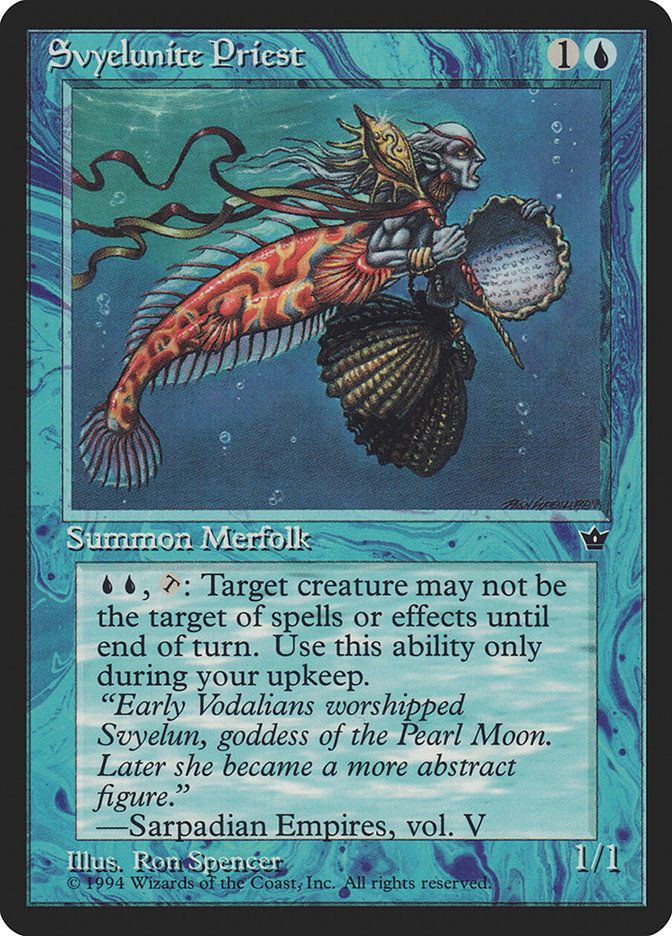

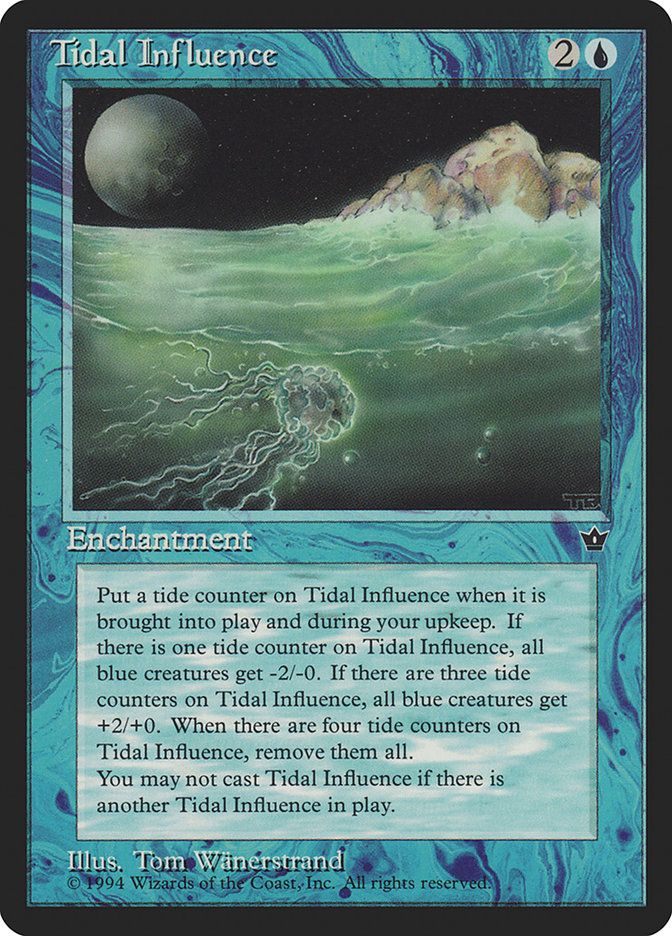
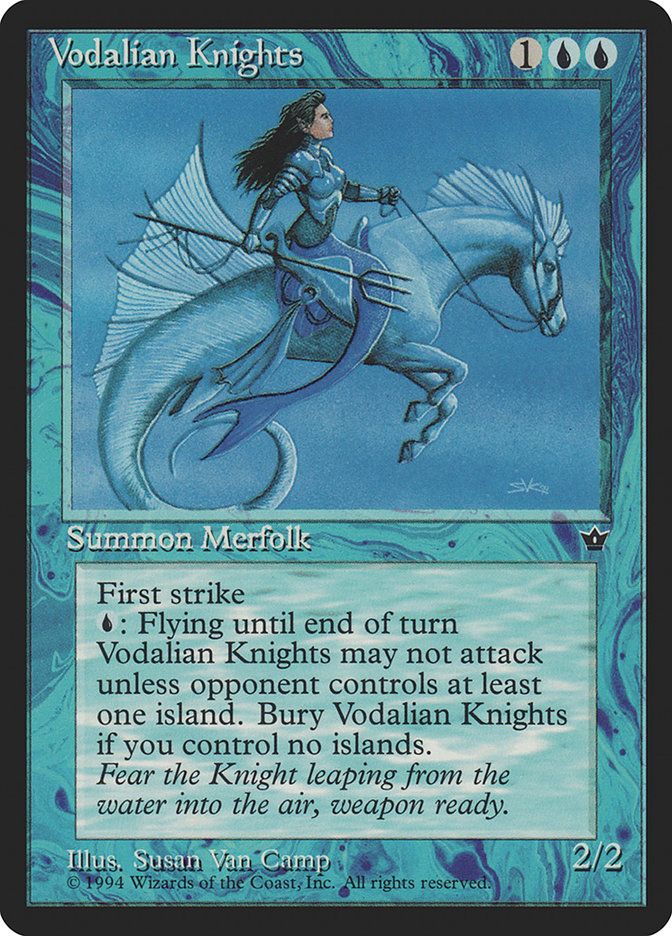

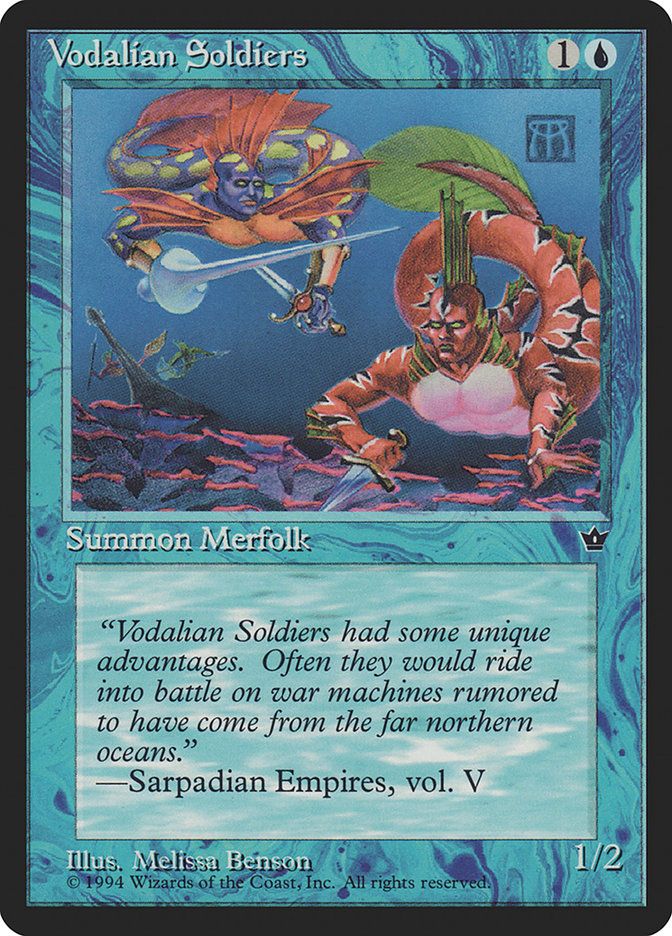

Black
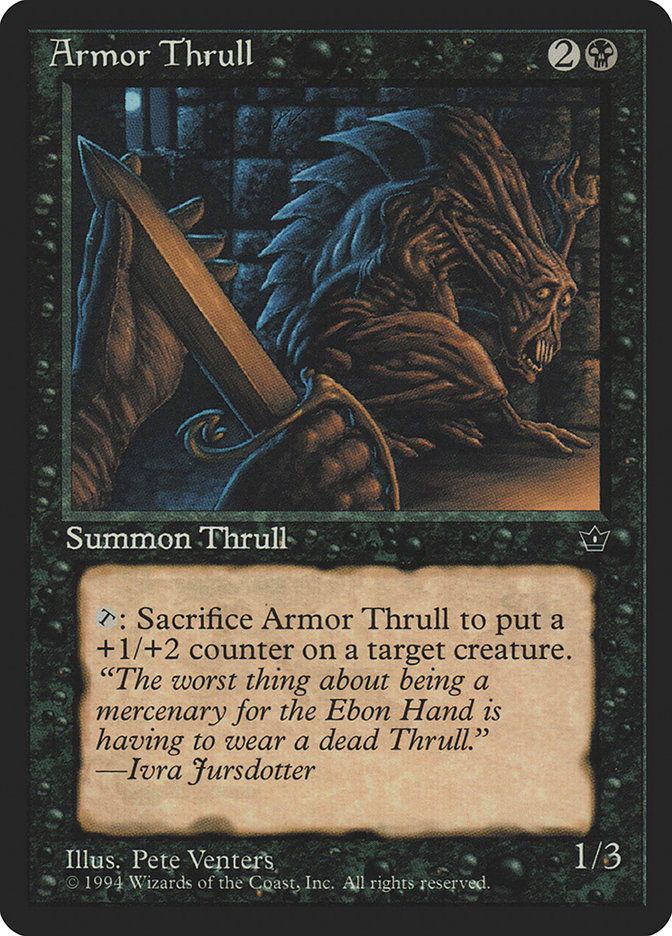




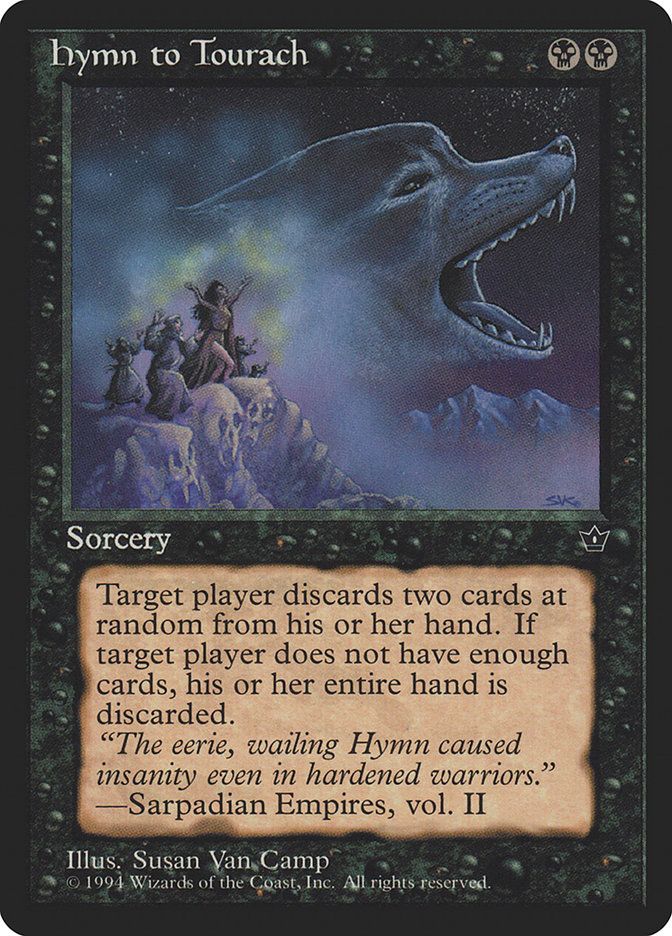


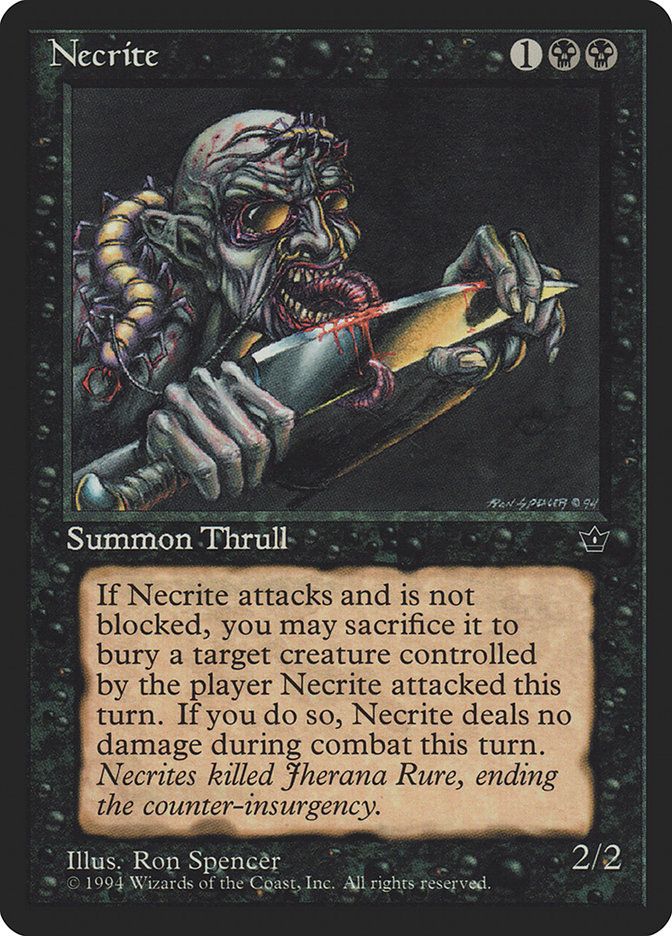
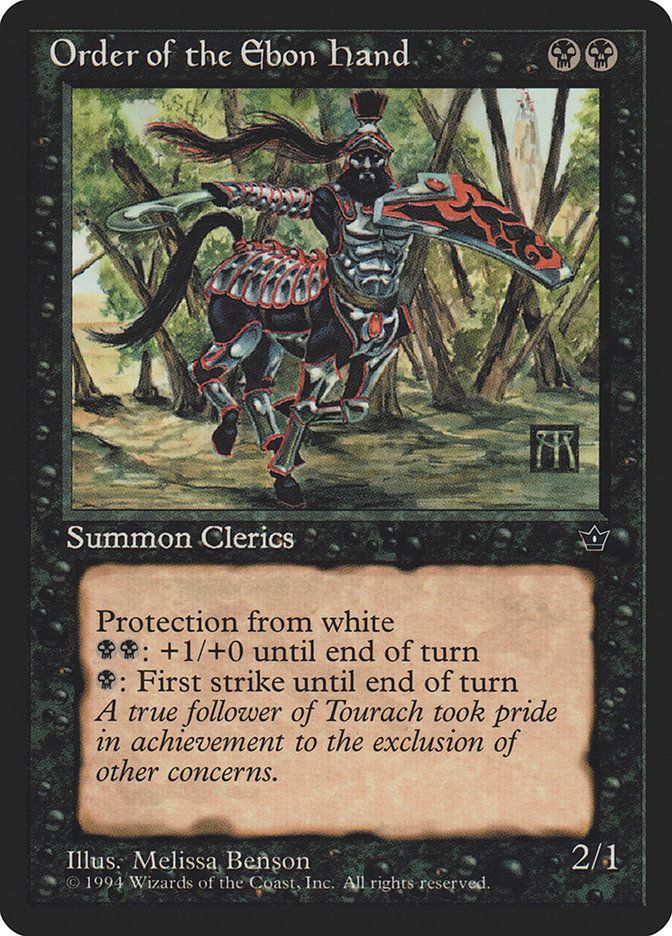
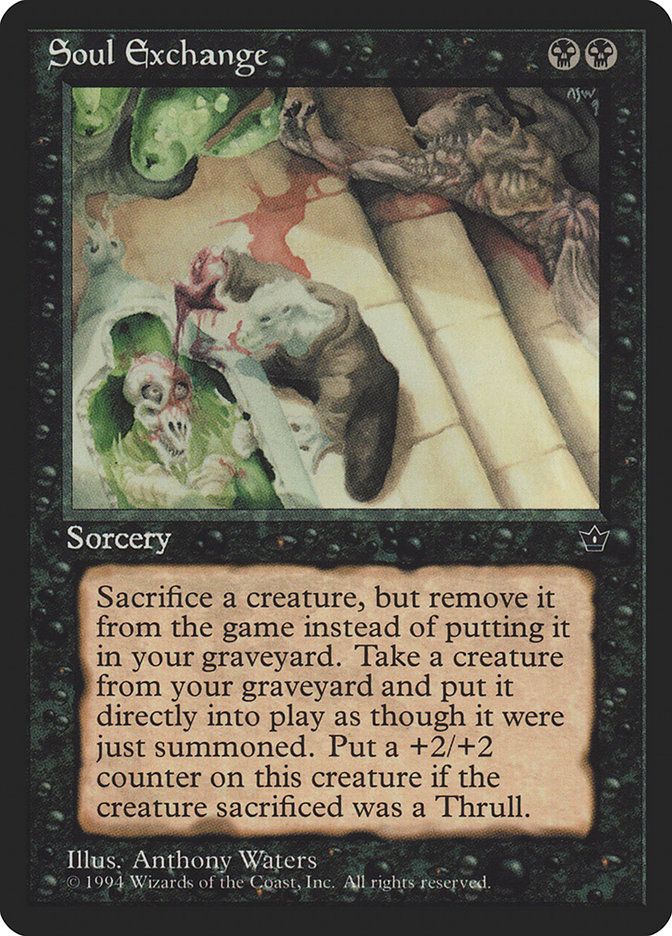


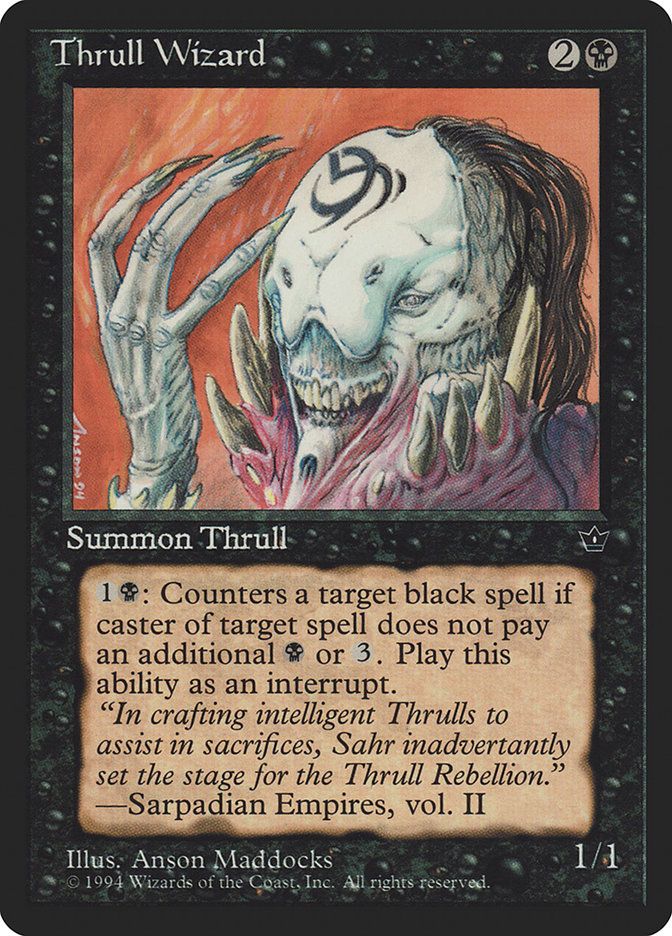
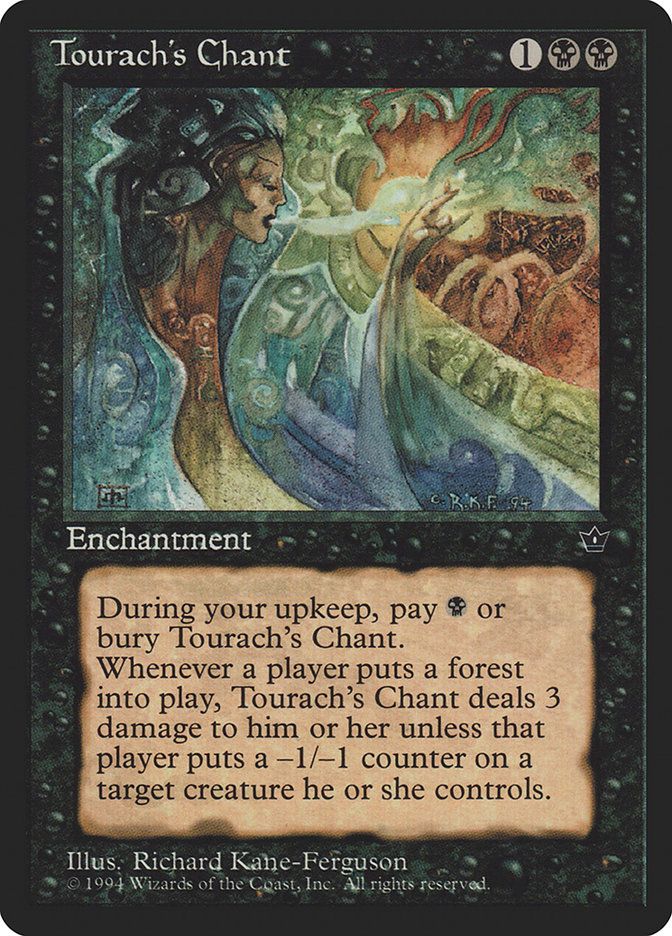

Red
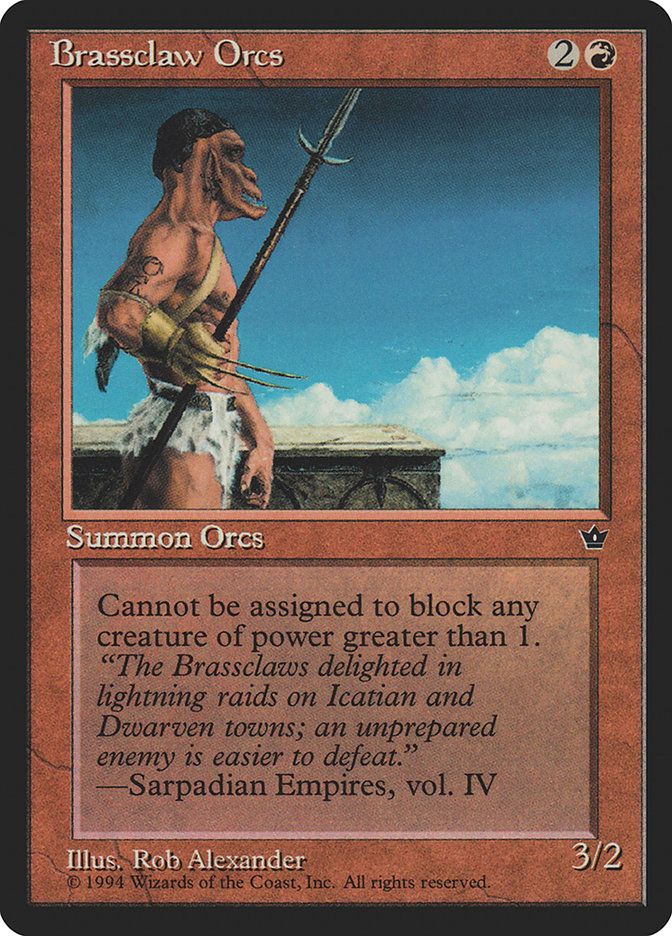
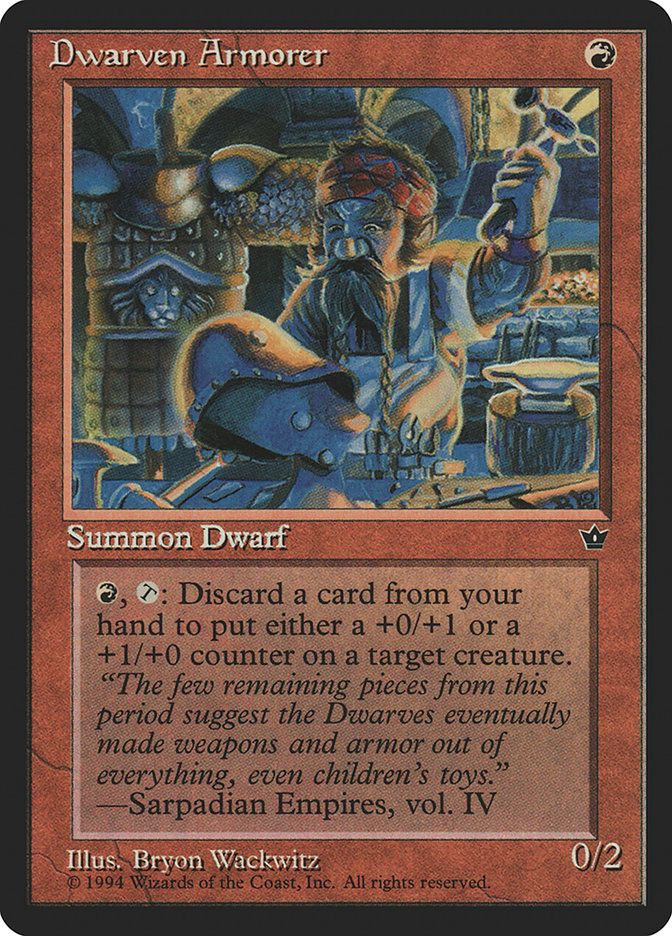
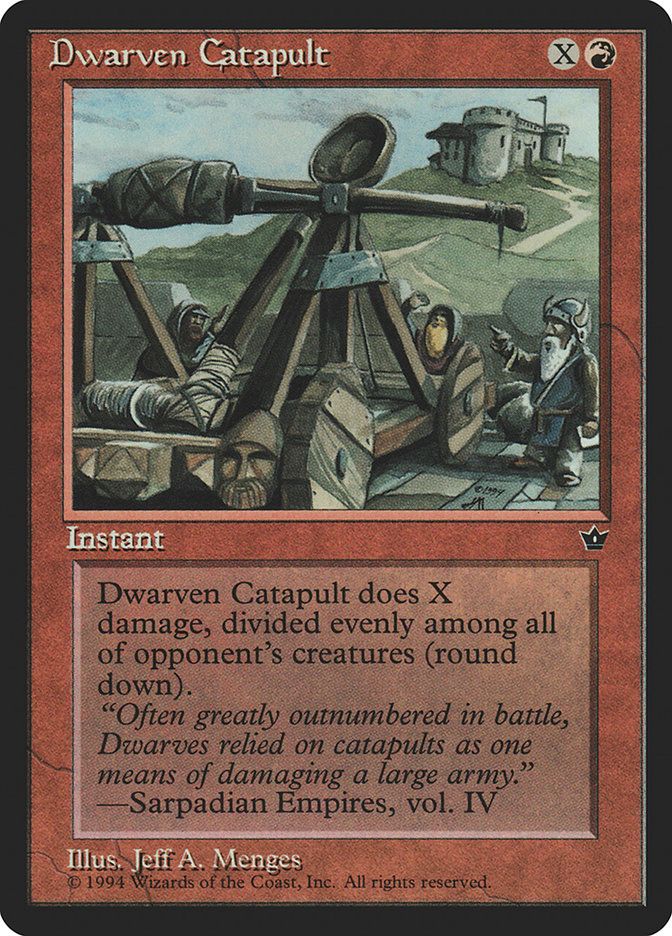

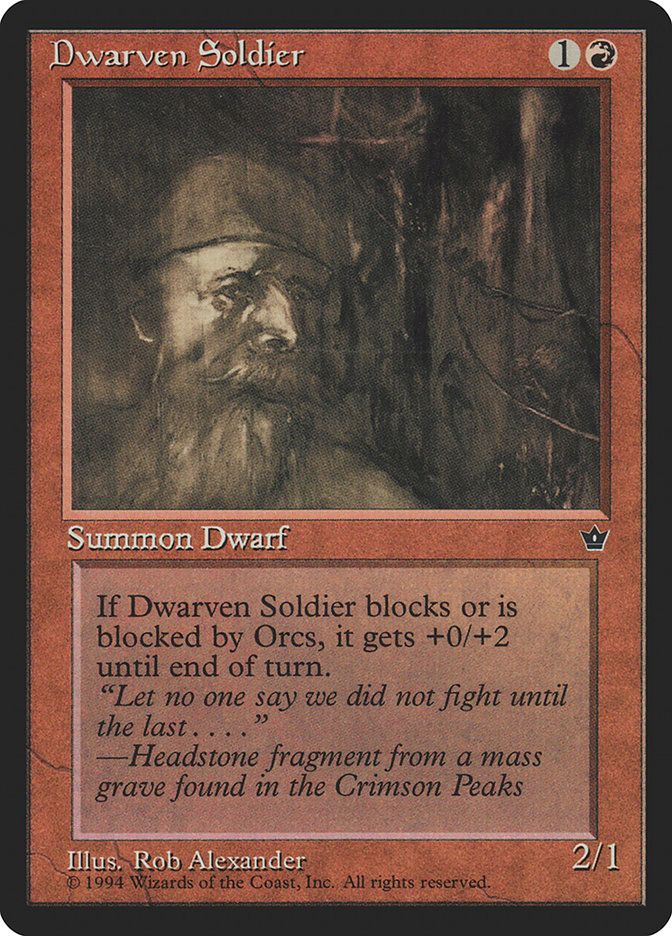
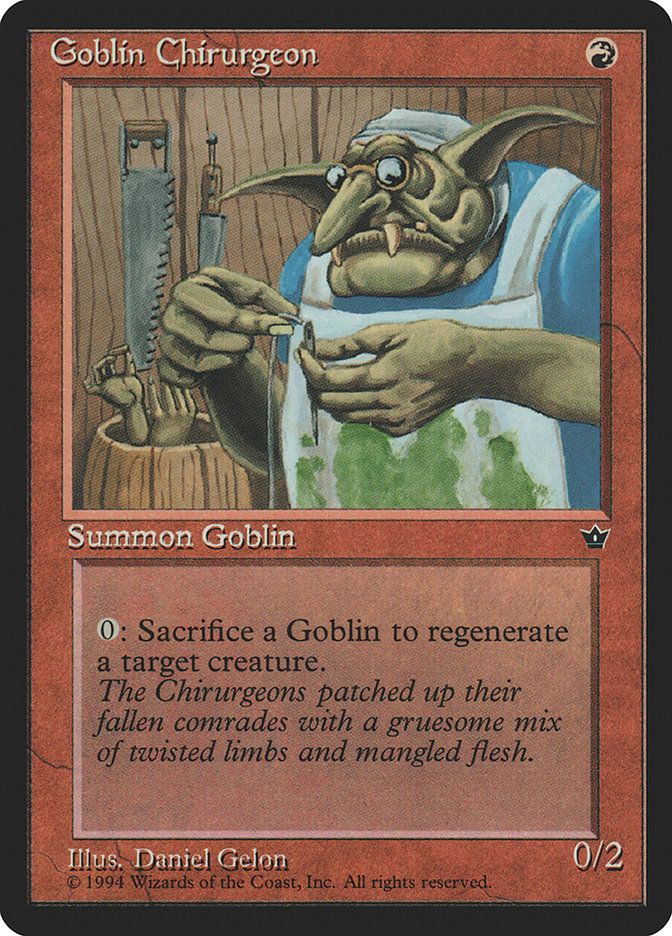
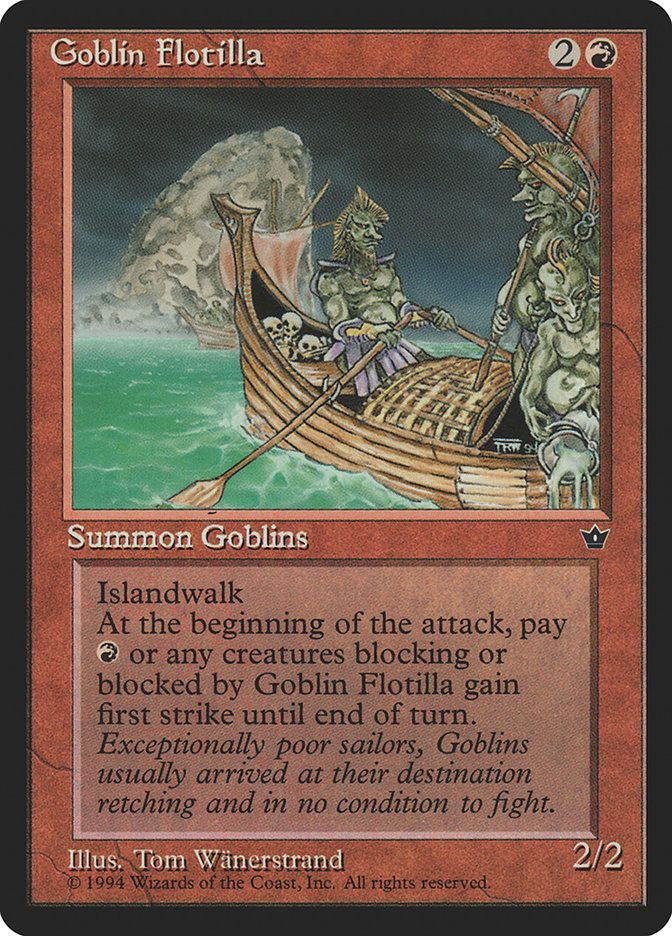

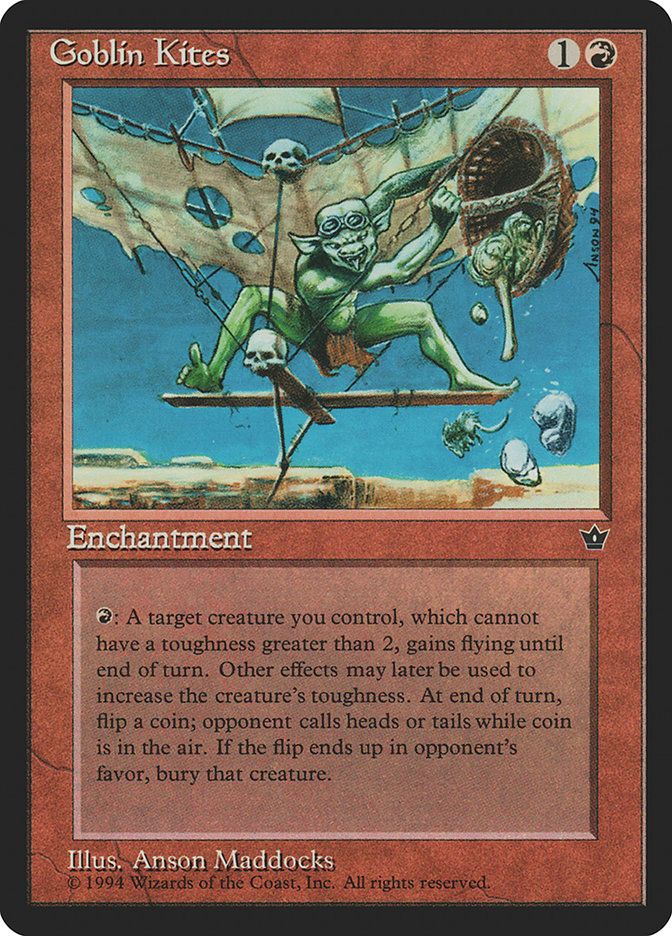
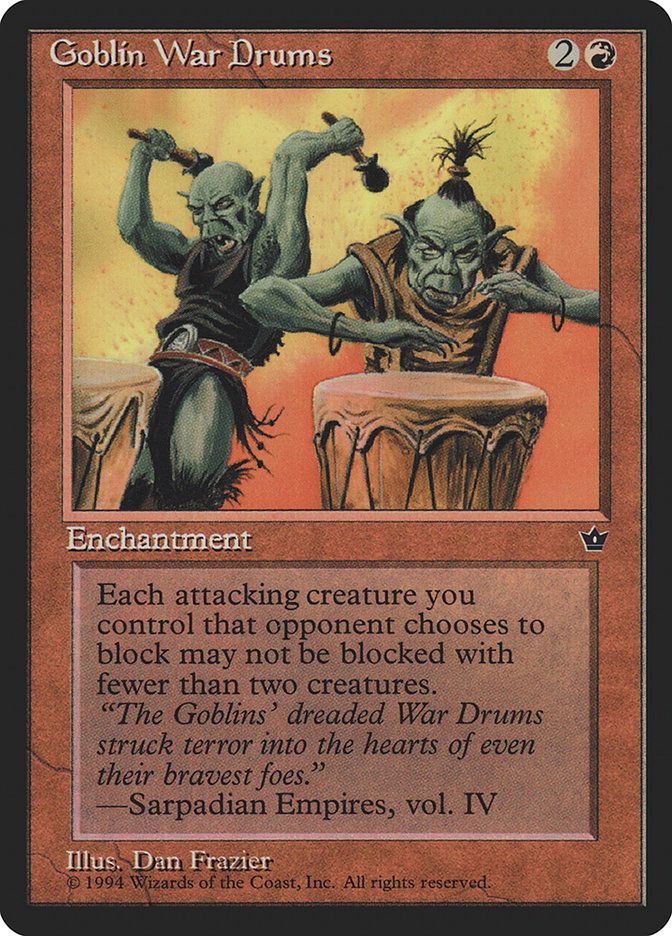


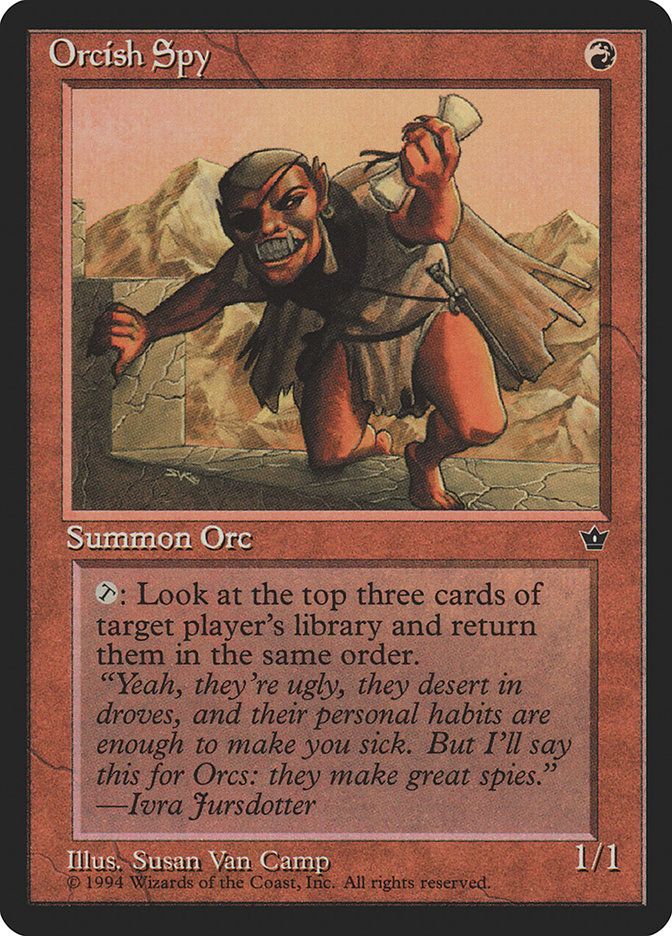
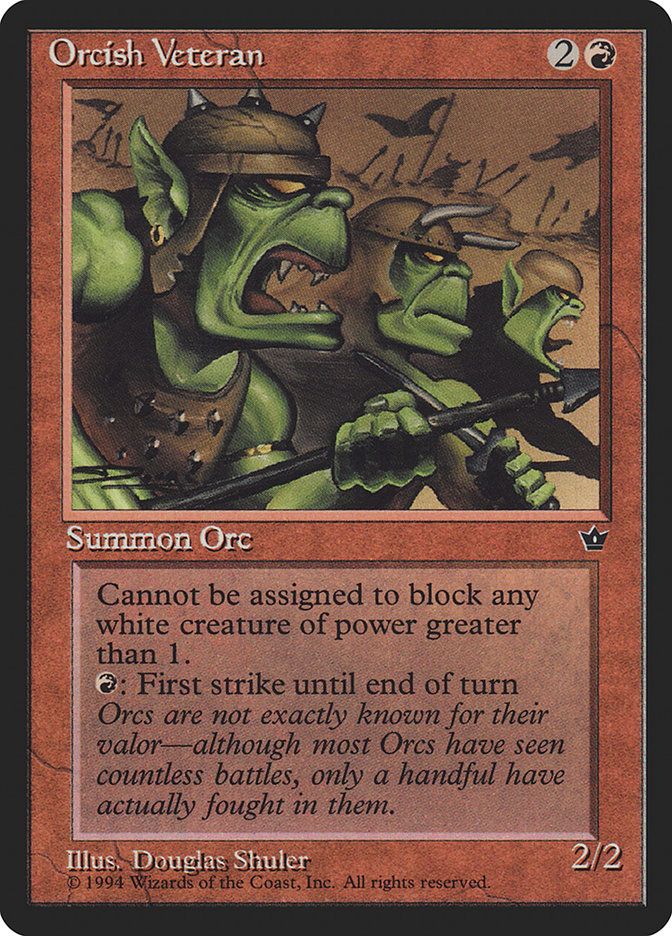
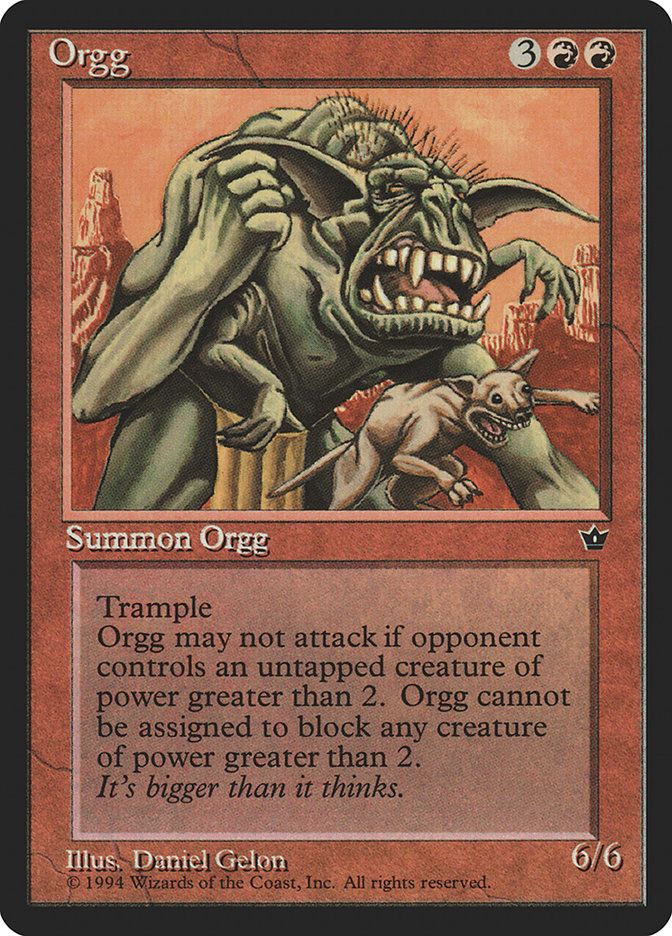

Green
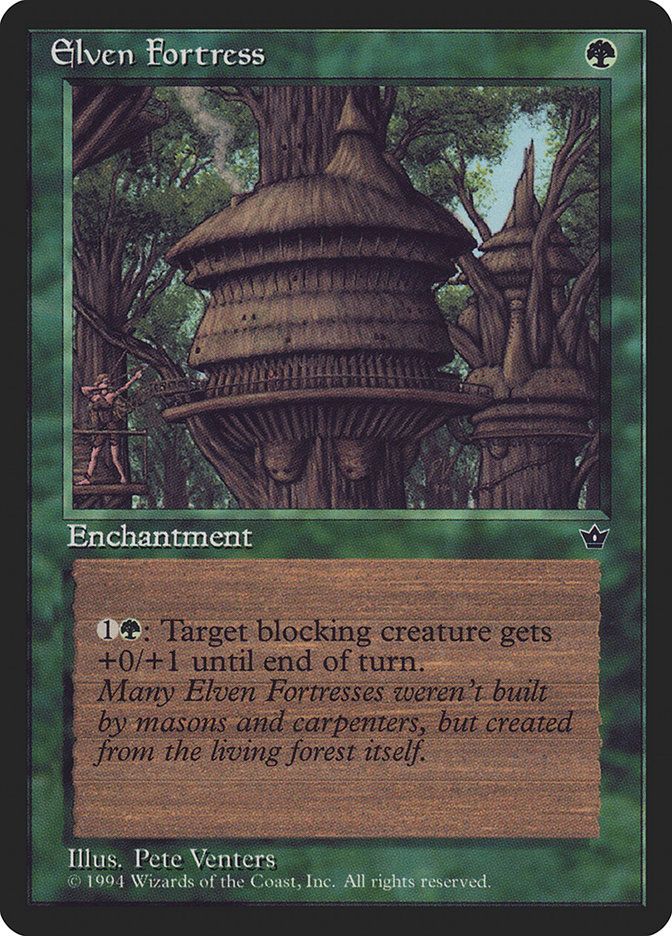

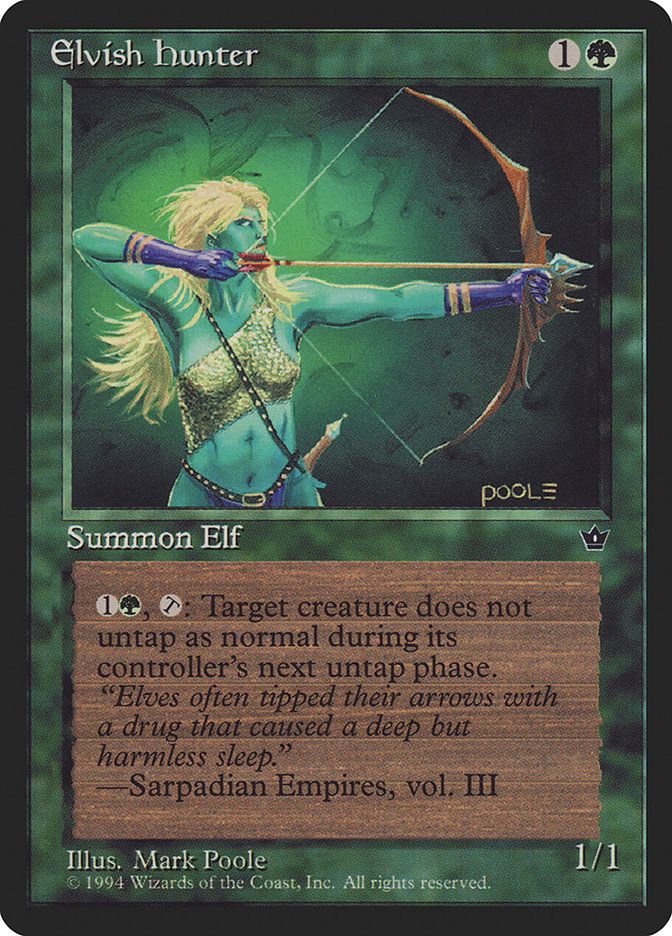

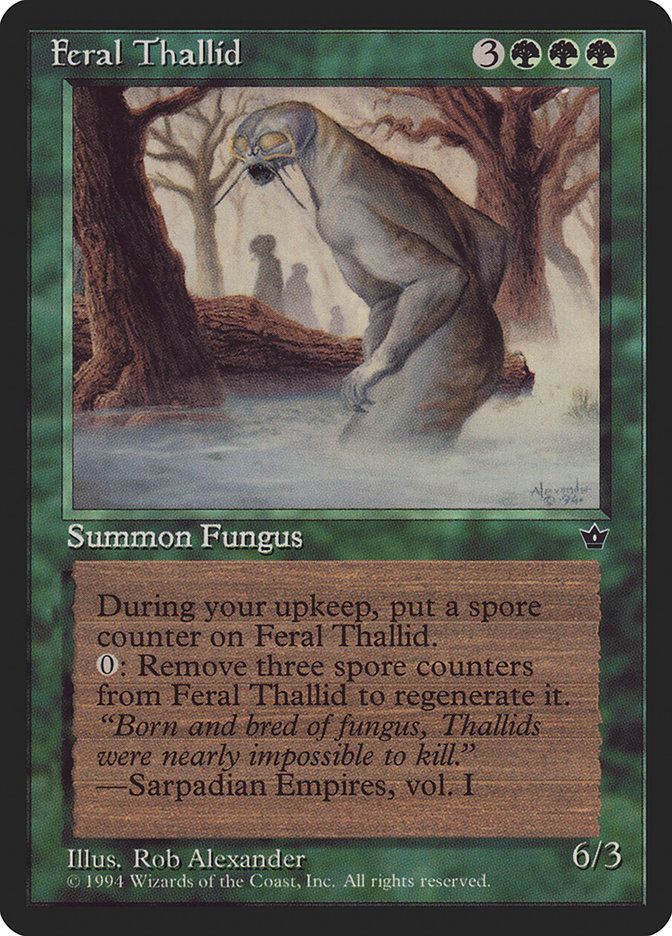


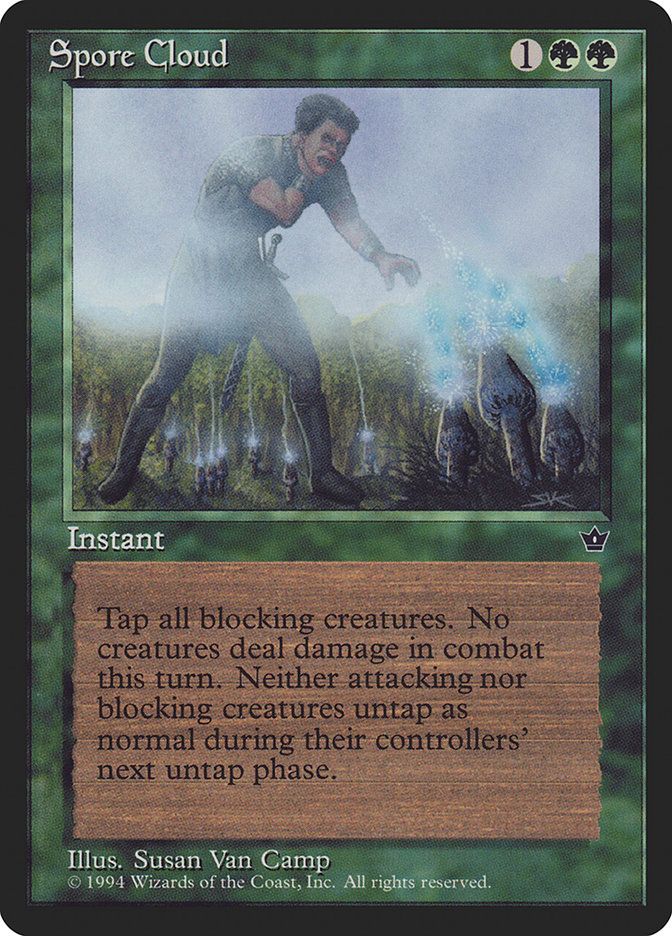
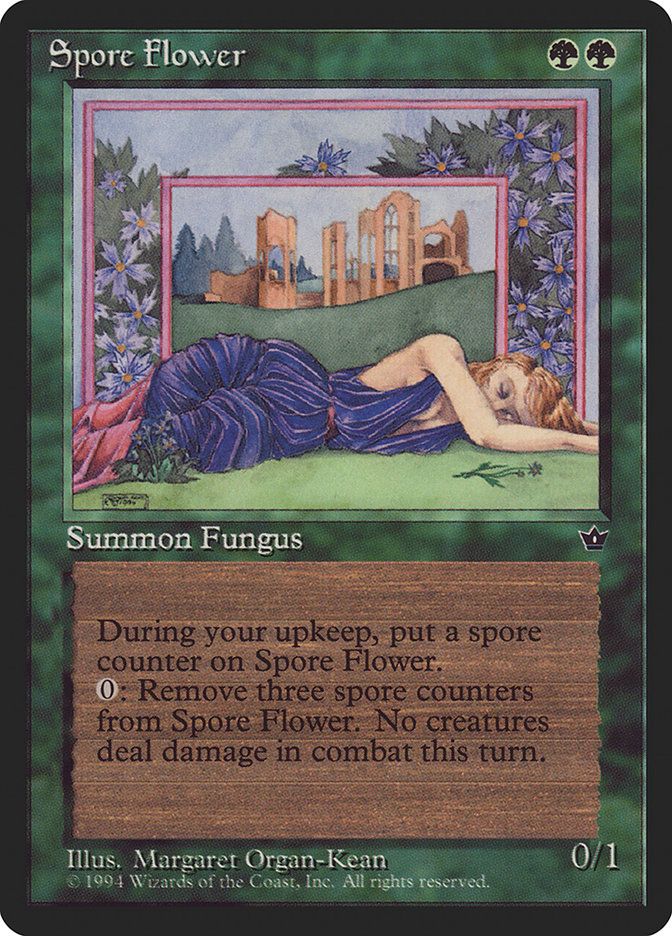


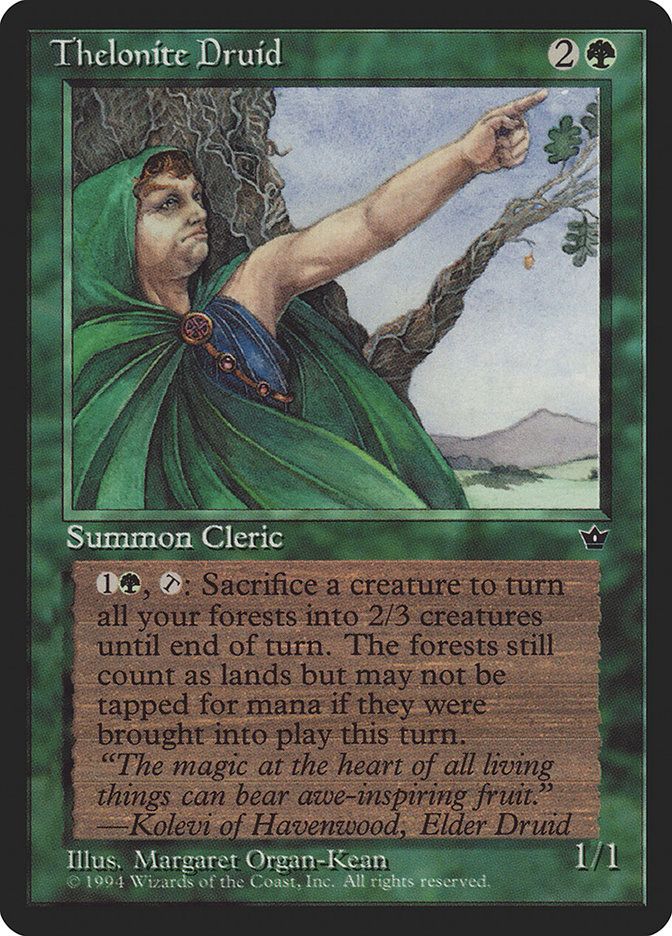

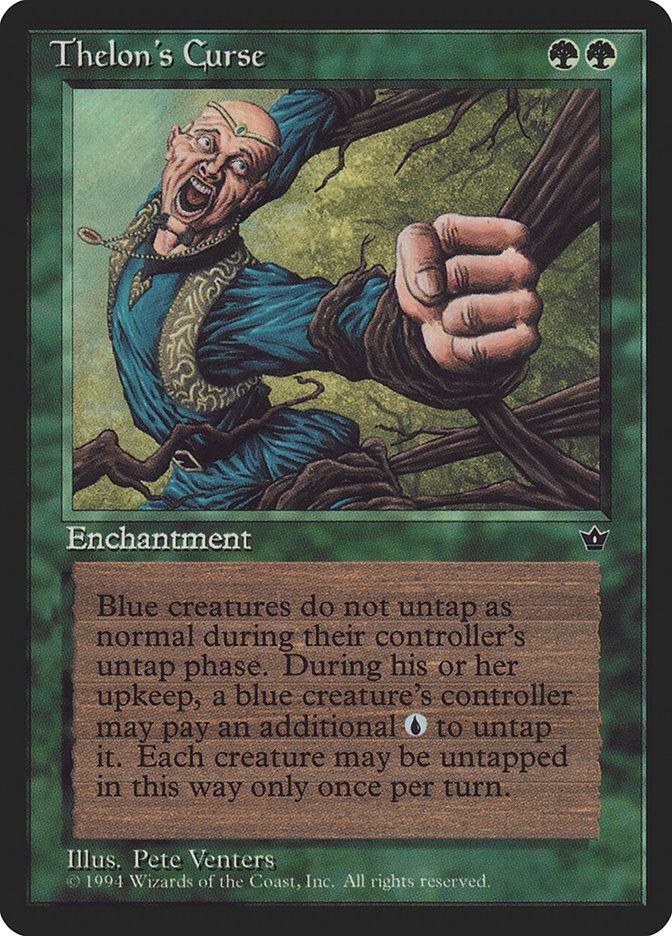
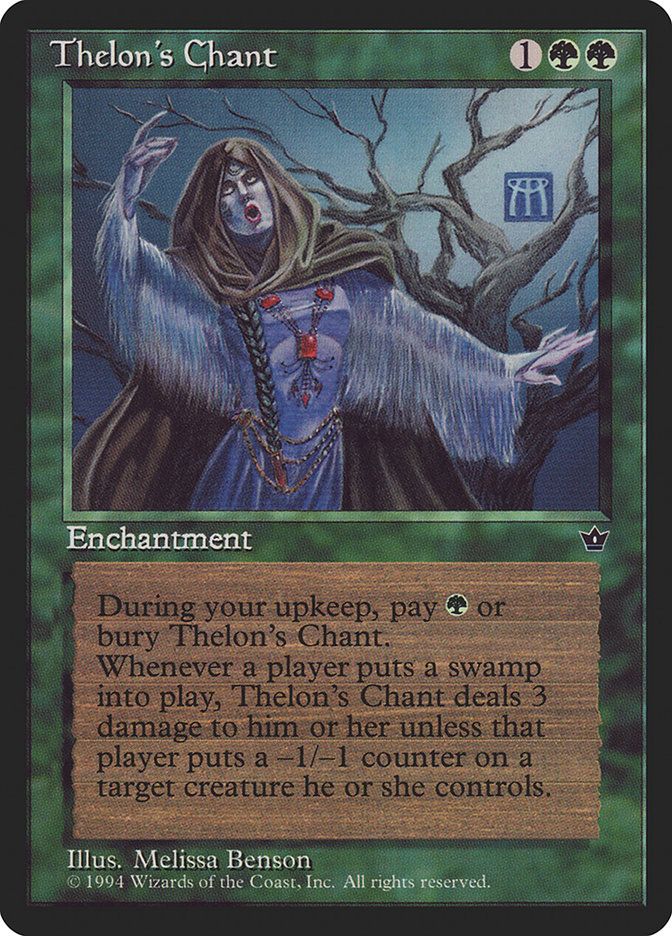
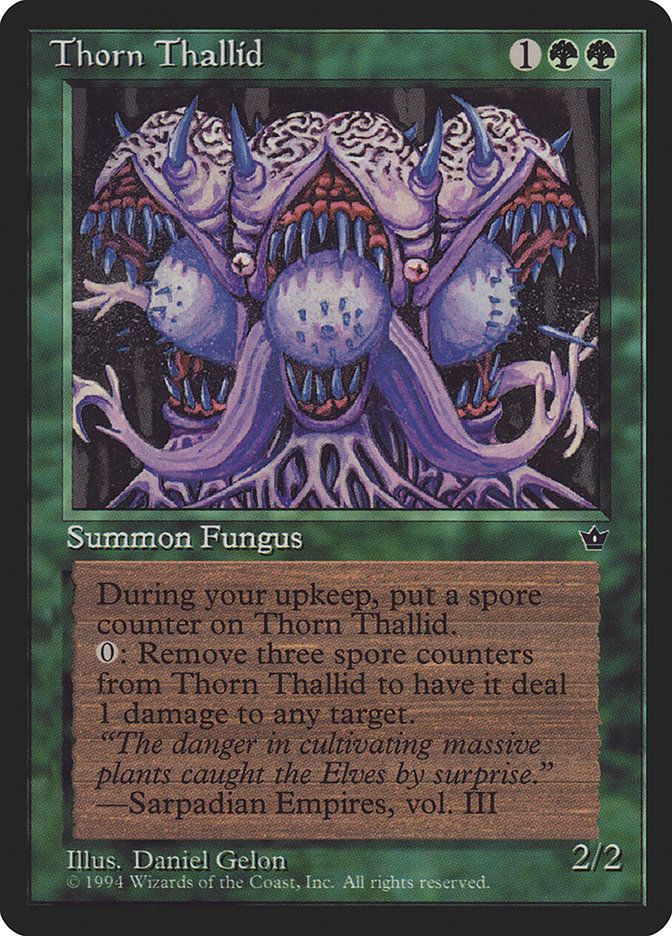
Colorless
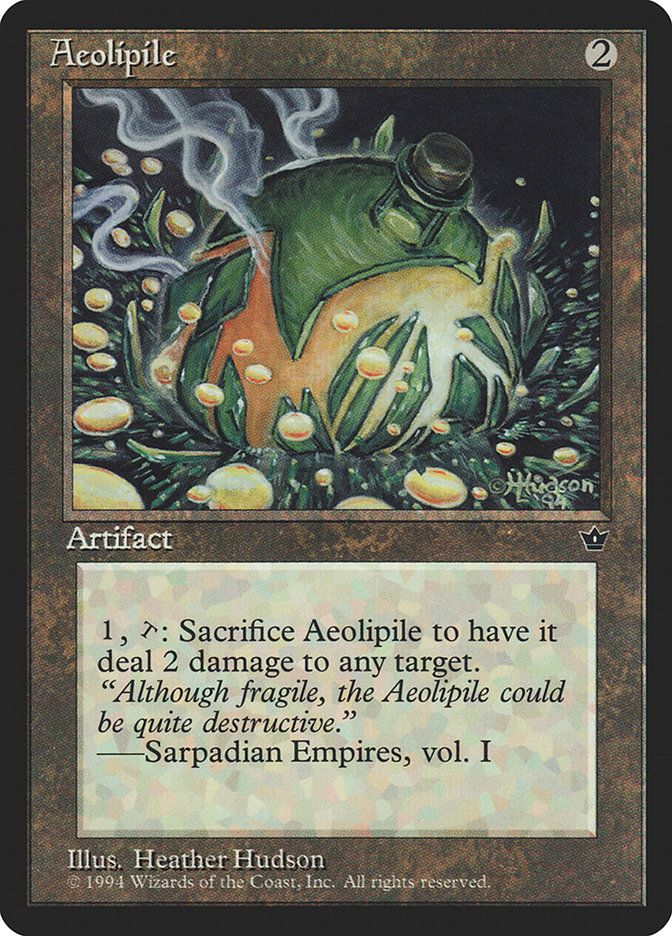
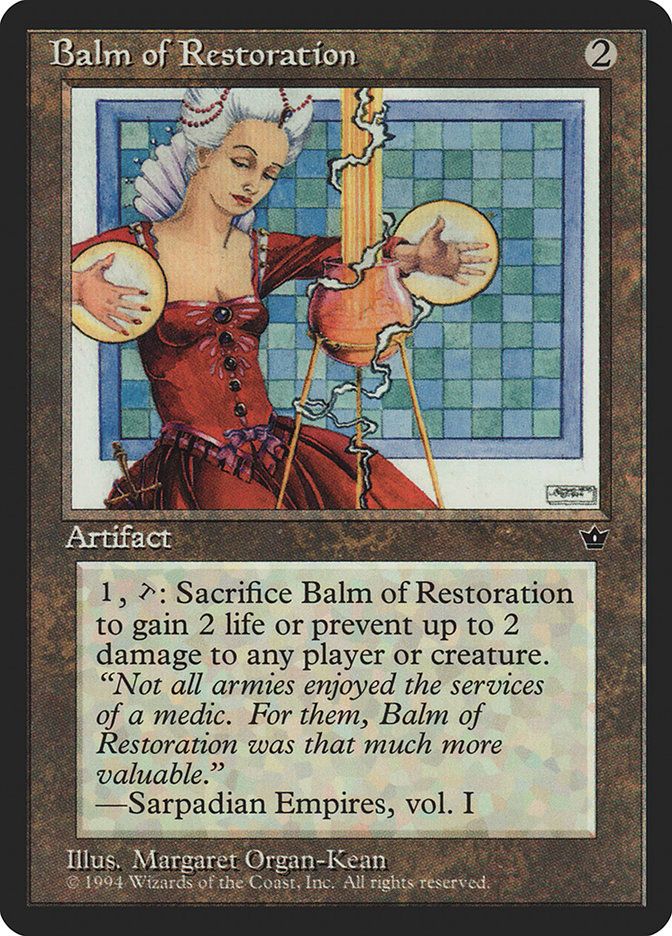

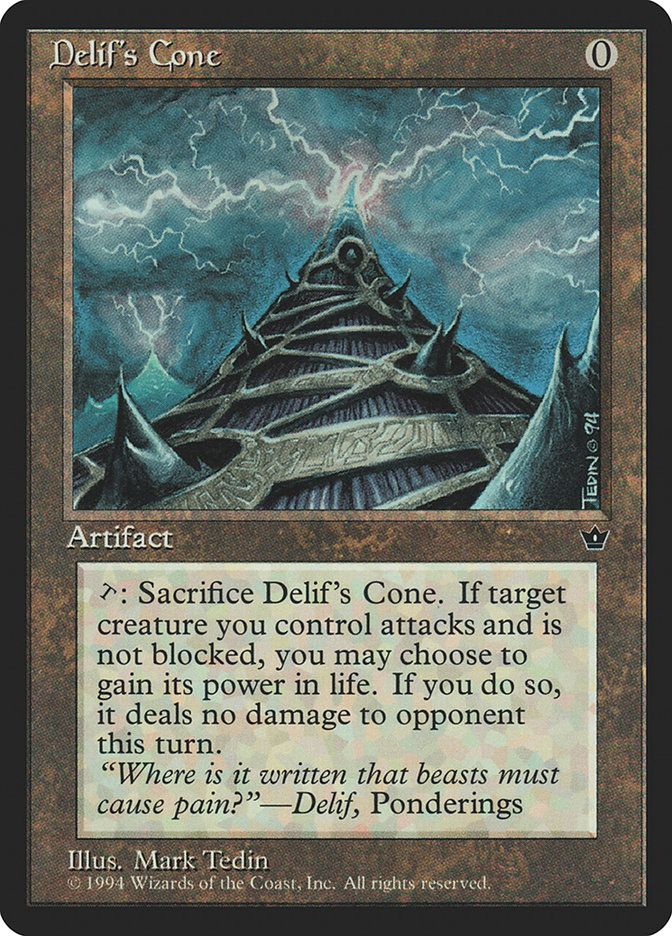
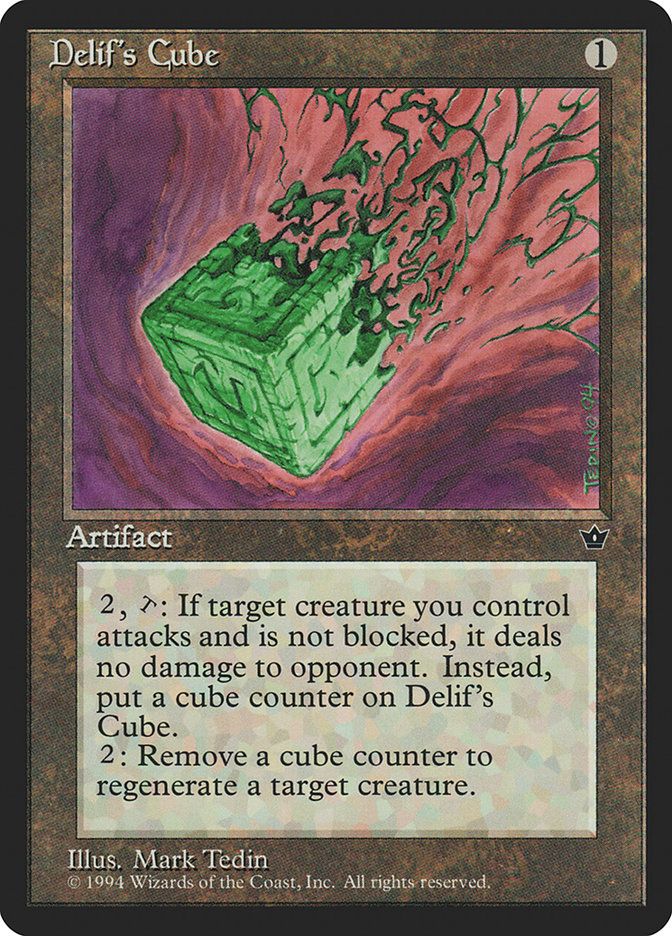

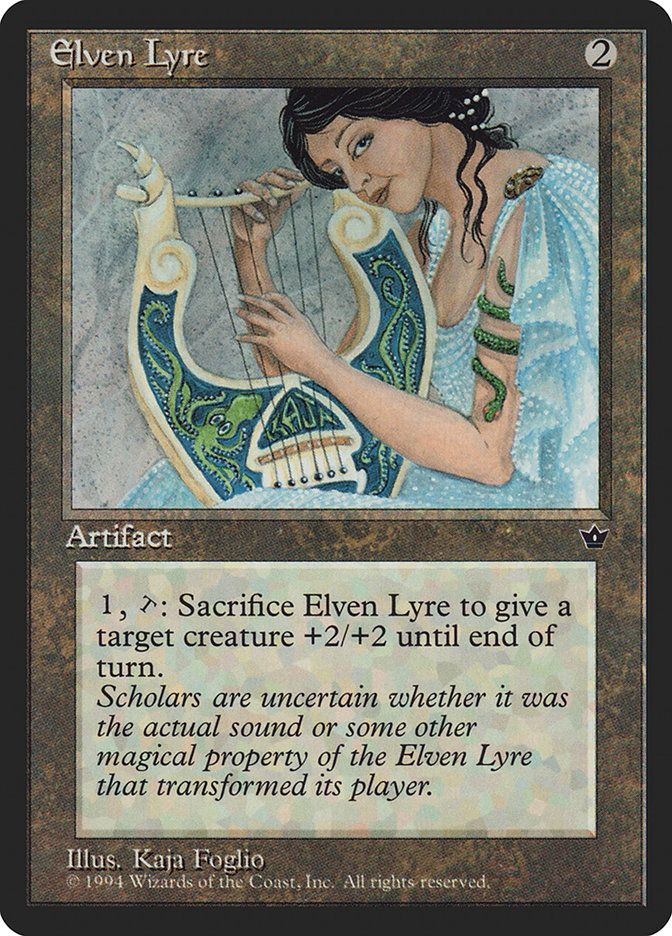
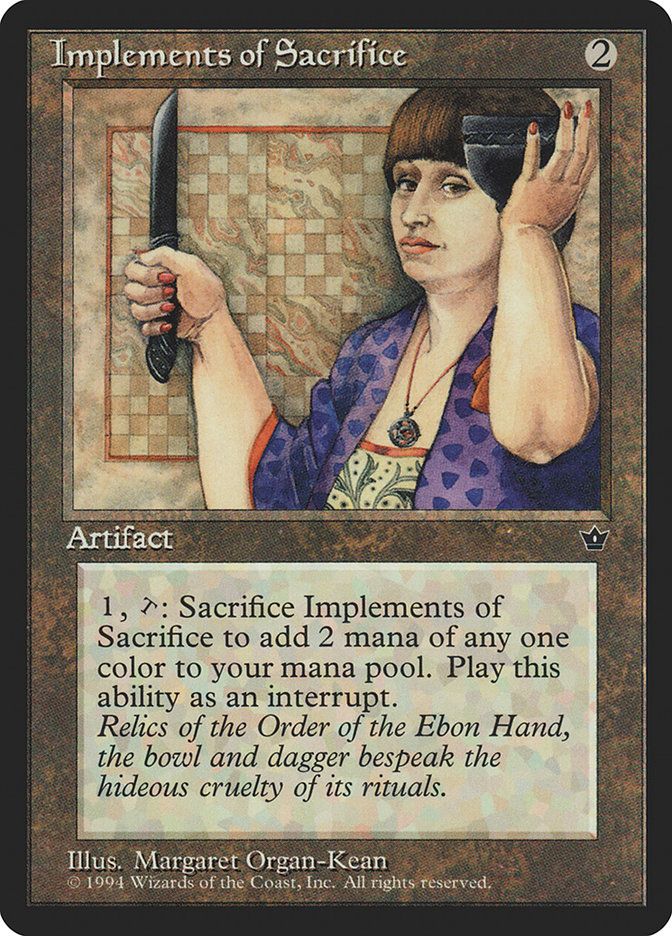
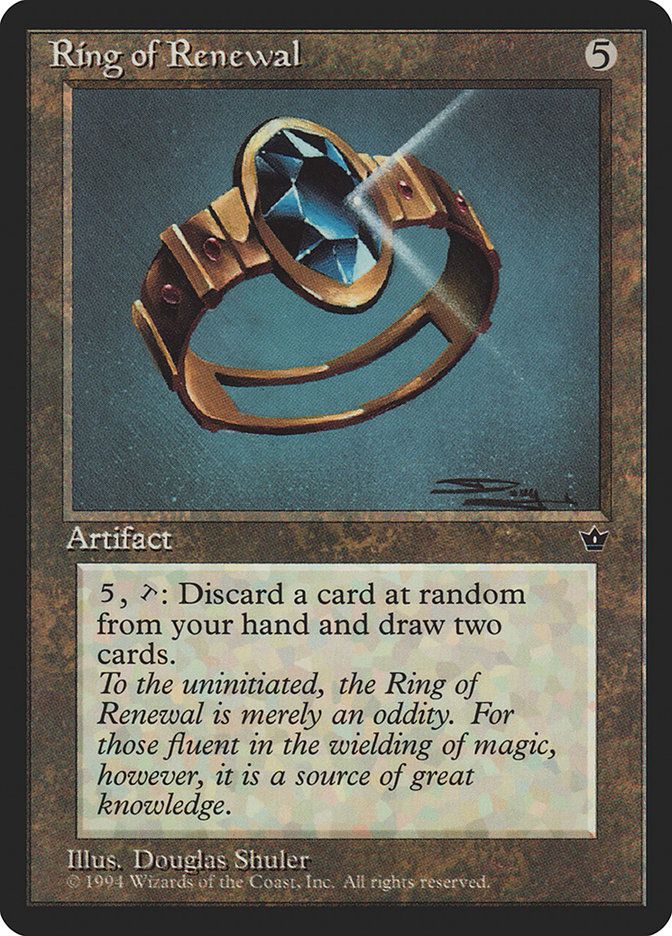
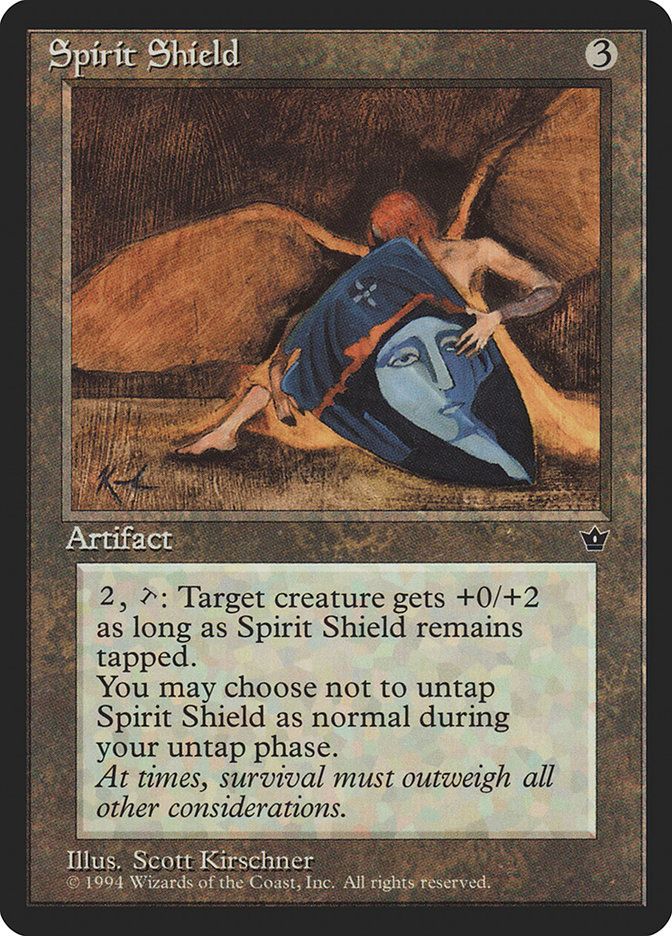
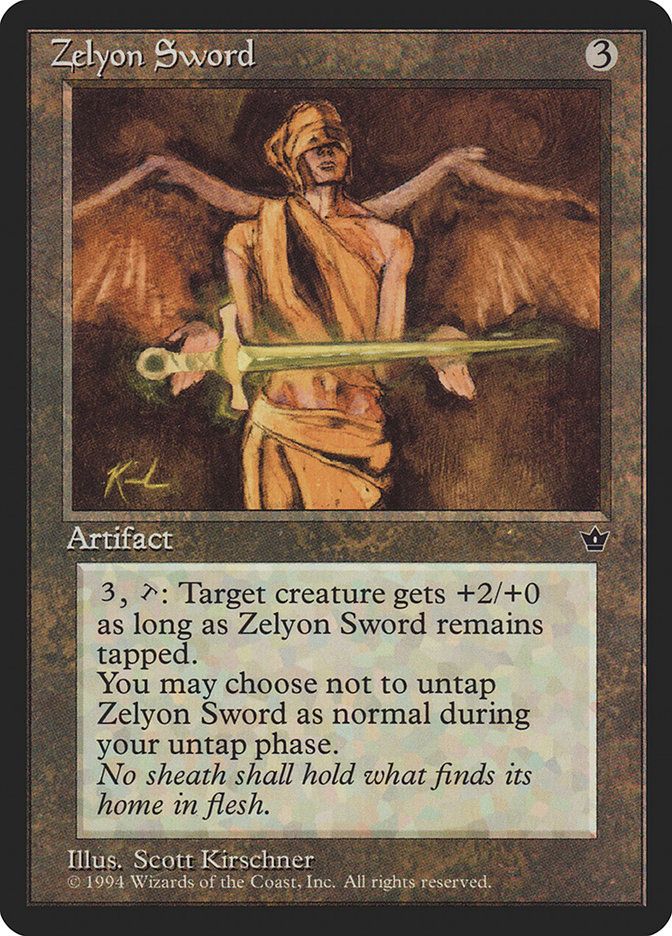
Lands
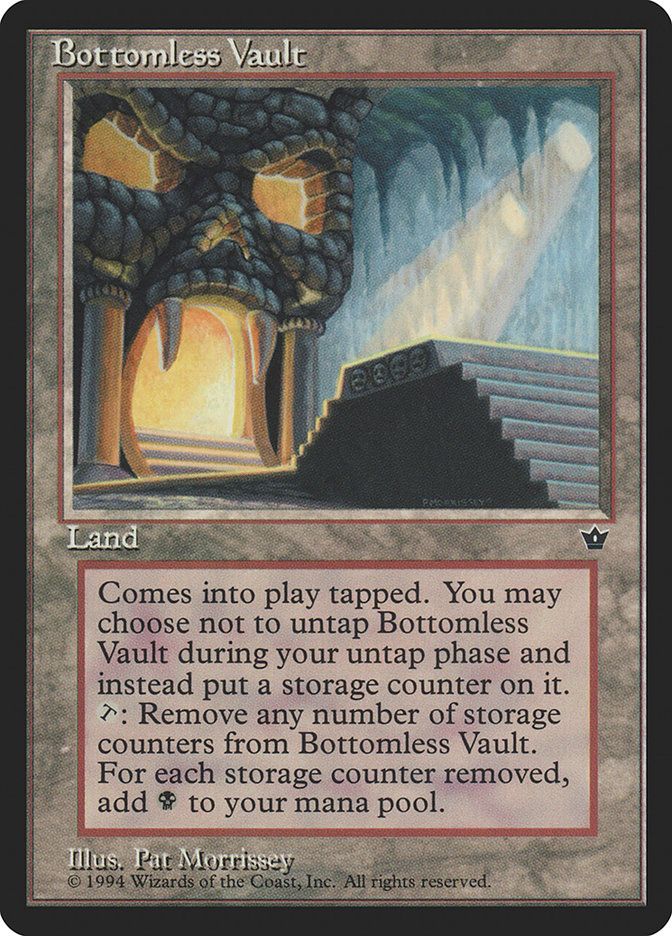

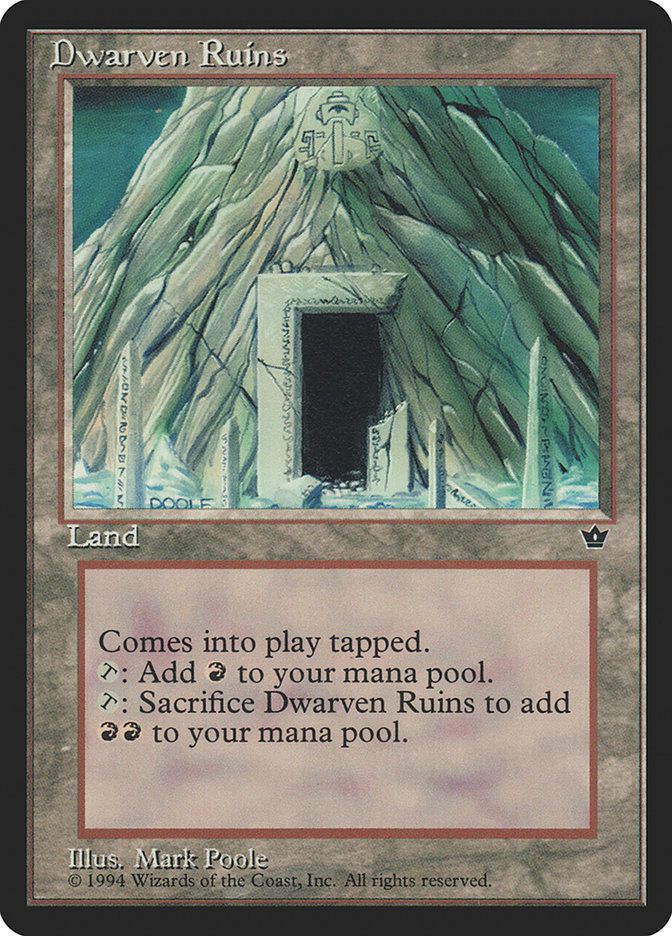
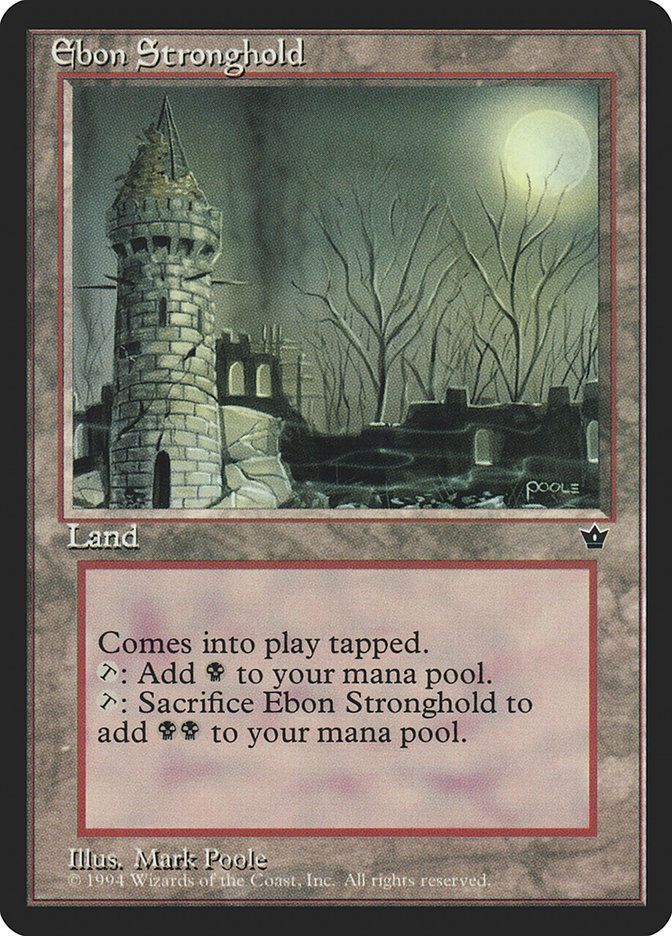

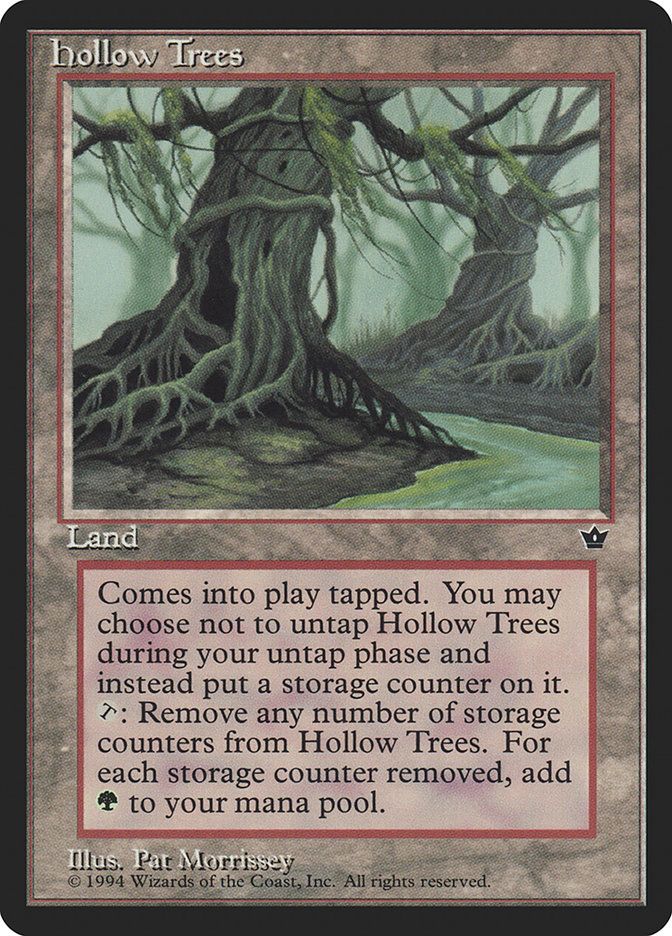
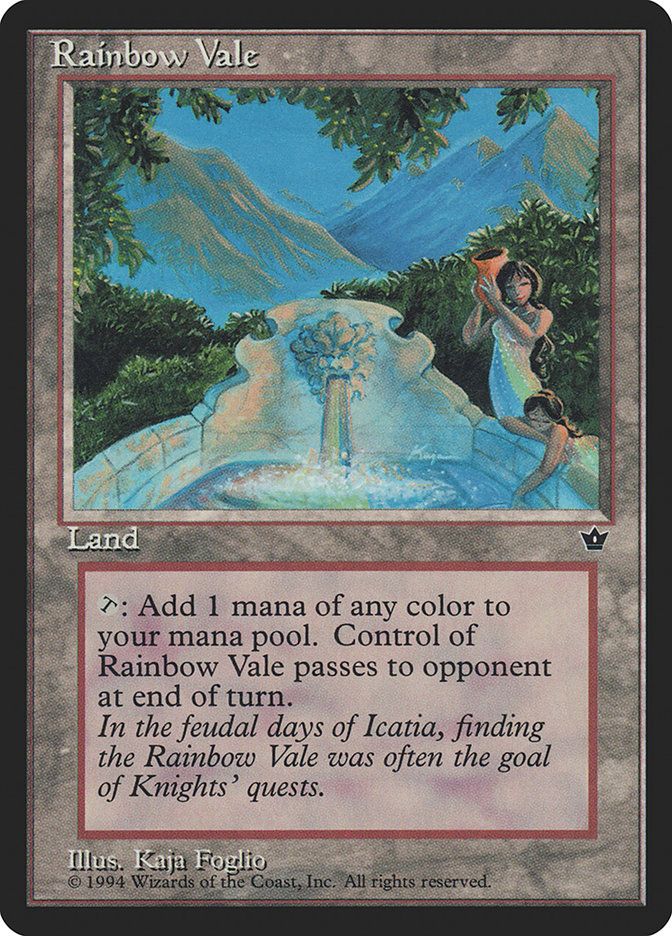
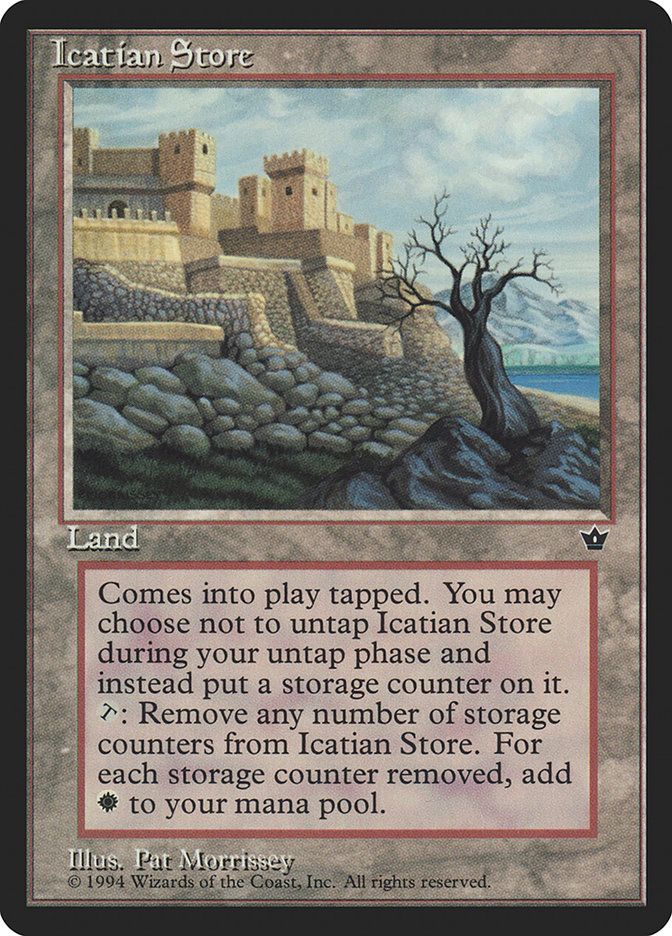

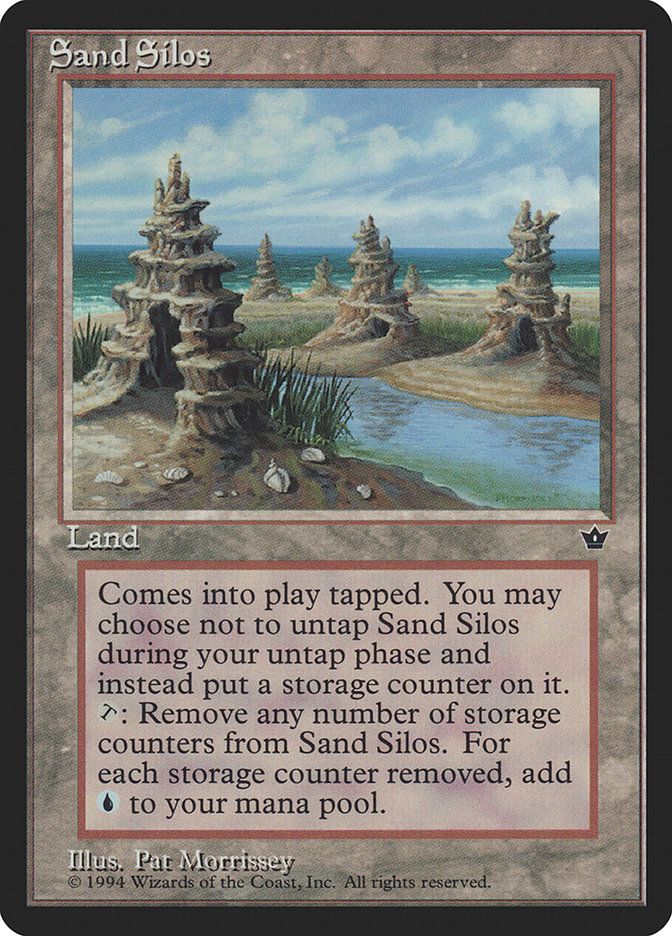

Notable Cards
Fallen Empires included a lot of concepts and designs that we’d see emulated in future sets, albeit in a more balanced fashion.
Rainbow Vale

Rainbow Vale is the most valuable card from Fallen Empires, but that’s not saying much. It comes into play untapped and taps for any color, but it comes with the huge drawback of passing to your opponent on your end step if you use it.
Sure, it’s guaranteed to fix your mana immediately, but I’ve learned my lesson too many times when my opponents won’t give me my Wishclaw Talisman back out of spite, so it won’t always reliably return to you.
Goblin Grenade

The now-classic Goblin Grenade was originally printed in Fallen Empires. This 5-damage sorcery is a staple in goblin tribal decks where you always have a spare 1/1 to sac for a greater purpose.
Hymn to Tourach

Infamous Hymn to Tourach is one of the best discard effects printed at common, if not one of the best discard effects in the game. to discard any type of card in an opponent’s hand is almost exclusively better than a Distress, with the potential to remove your opponent's next two land drops.
Magic has since moved away from random discard effects, understandably so.
Storage Lands





Building on The Dark’s City of Shadows was a cycle of storage lands that could build up counters not by untapping, but by exchanging those counters later for an equivalent amount of colored mana. The storage counter would return sporadically throughout Magic, revised in Mercadian Masques and then given an allied-color cycle in Time Spiral.
You can see how the design was cleaned up over time: compare Icatian Store to Fountain of Cho and Calciform Pools. Nowadays they’re best used with proliferate effects to really ramp your mana.
Sac Lands





Fallen Empires introduced the original sac lands, which enter tapped and can tap to add one mana of their respective color, or tap and sacrifice themselves to add two mana instead. Invasion revisited this concept with 3-color lands, and Odyssey introduced a cycle that could sacrifice to add any color.
Alternate Arts
Fallen Empires is the first set to feature multiple different arts for a handful of cards. Each common of C4 rarity has four different printings, and each common of C3 rarity has three different printings, each with unique art and flavor text. At the time this was considered a weakness of the set. With so many confusing counters and tokens to keep track of already, making the cards harder to recognize in the moment only compounded the set’s difficulty.
That should sound hilarious to you if you’ve kept up with current Magic releases. Sets these days include so many variants and retro-frame reprints and Universes Beyond printings that it’s a wonder any of us can play this game anymore.
Misprints
As a final, unbelievable misfortune, a number of Fallen Empires cards were printed with the cardbacks from Wyvern, another TCG manufactured at the same factory. These cards are extremely rare and very valuable. Some go for upwards of $2,500 on eBay.
Available Products
Booster Packs
No products found.Fallen Empires was sold in No products found. that contain six commons and two uncommons, with one uncommon having the chance to be a rare.
No products found.
Booster Boxes

The set was also sold in booster boxes, which contain 60 booster packs per box. Sealed Fallen Empires booster boxes go for around $600 these days, but a pack’s price fluctuates more wildly depending on its condition and intended purpose.
- Brand new in original factory-sealed packaging!
- Magic The Gathering Card Game - Fallen Empires Booster Box - 60P8C
Wrap Up

Spore Cloud | Illustration by Jesper Myrfors
The cards in Fallen Empires tell a story immortalized by Time Spiral’s Sarpadian Empires, Vol. VII. While WotC may have seen the set as an early failure in design and production strategy, we should think of it as a microcosm of what early Magic was: a weird fantasy world where mechanics were built around the flavor and the power level between sets swung wildly back and forth, where every new set was full of new concepts as the design team fleshed out how the game would look for years to come.
What’s your favorite early Magic set? Do you have any fond memories of playing Fallen Empires cards, or had you totally forgotten about it until now? Let me know in the comments or over on Draftsim's Twitter.
Thanks for reading, and remember: all great empires eventually fall!
Note: this post contains affiliate links. If you use these links to make a purchase, you’ll help Draftsim continue to provide awesome free articles and apps.
Follow Draftsim for awesome articles and set updates:
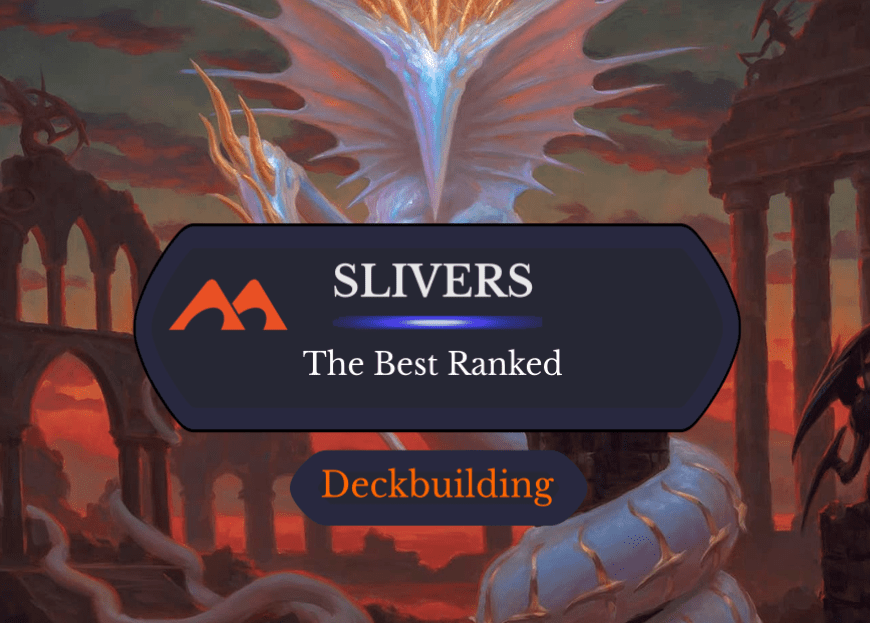

Add Comment